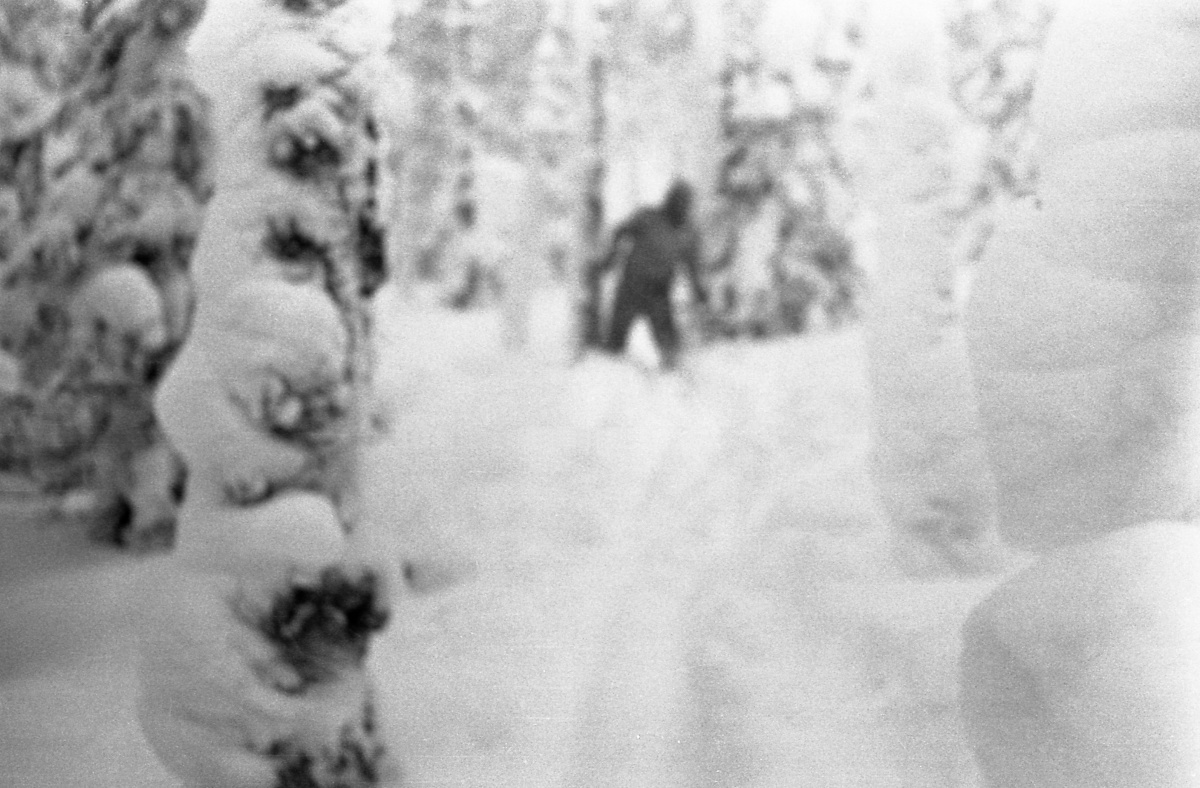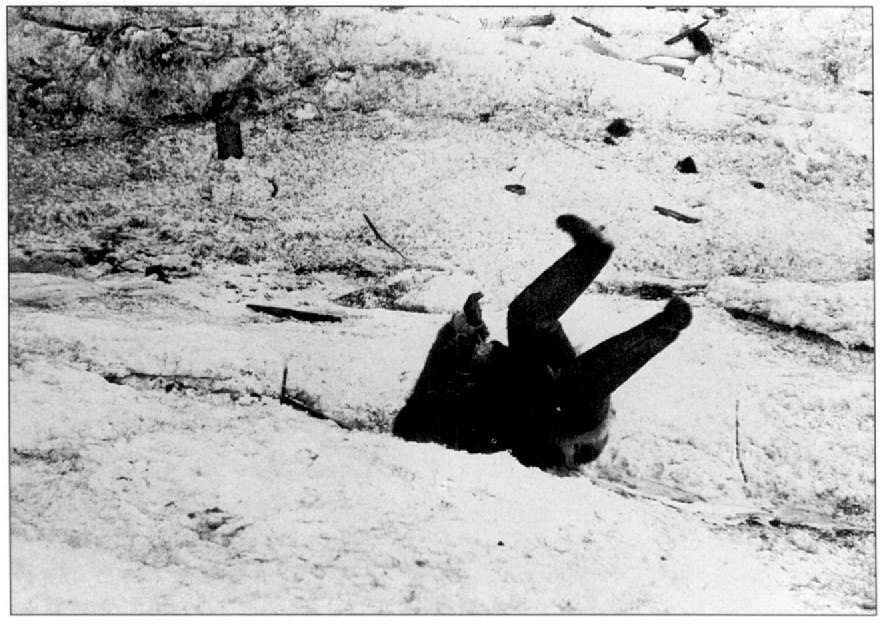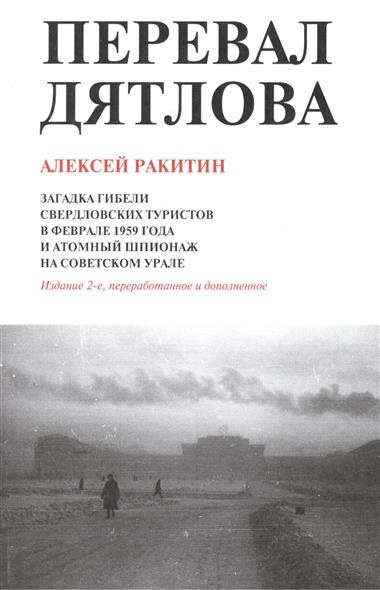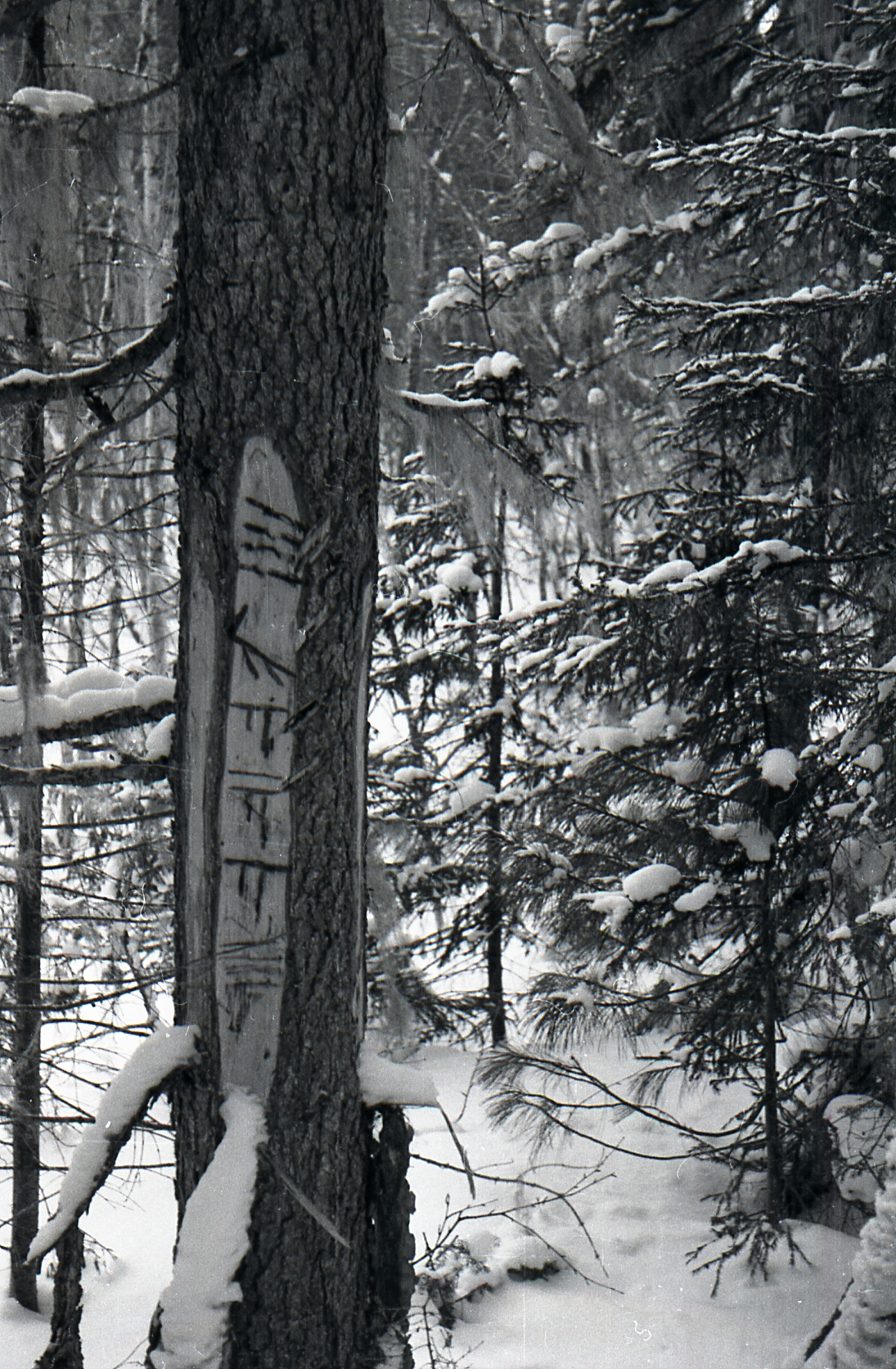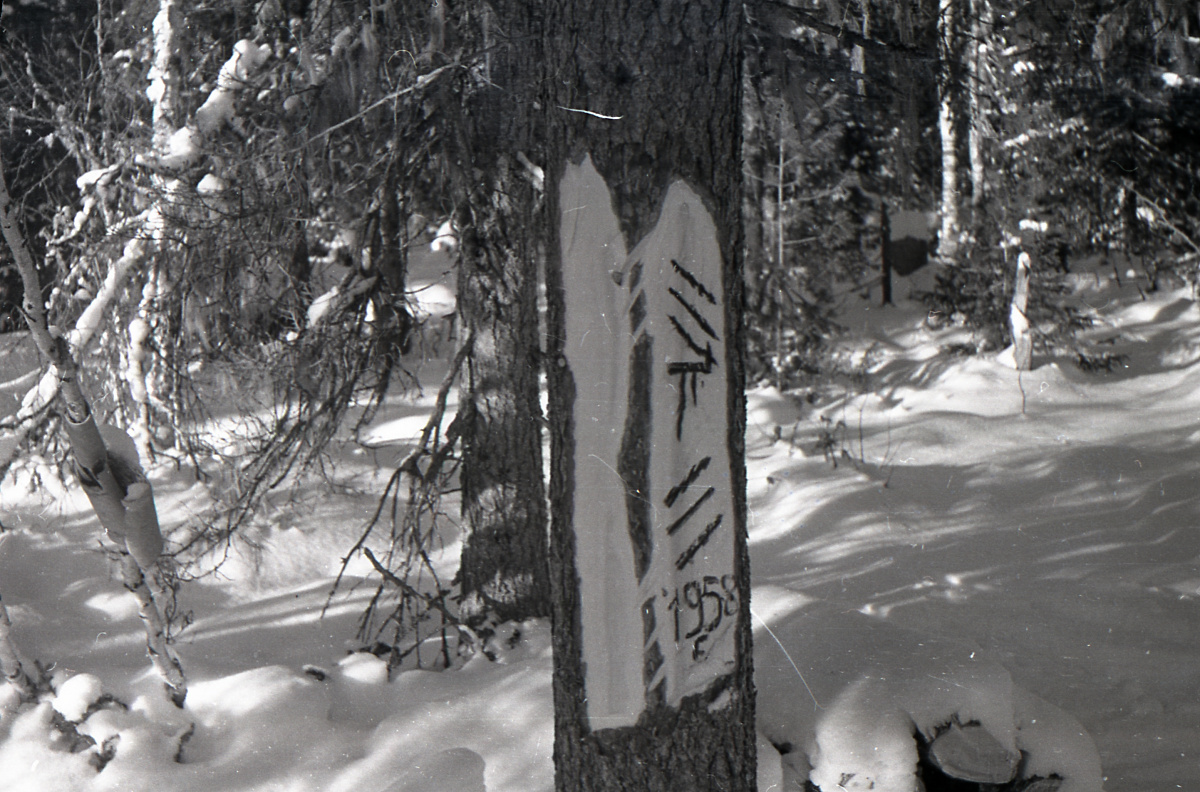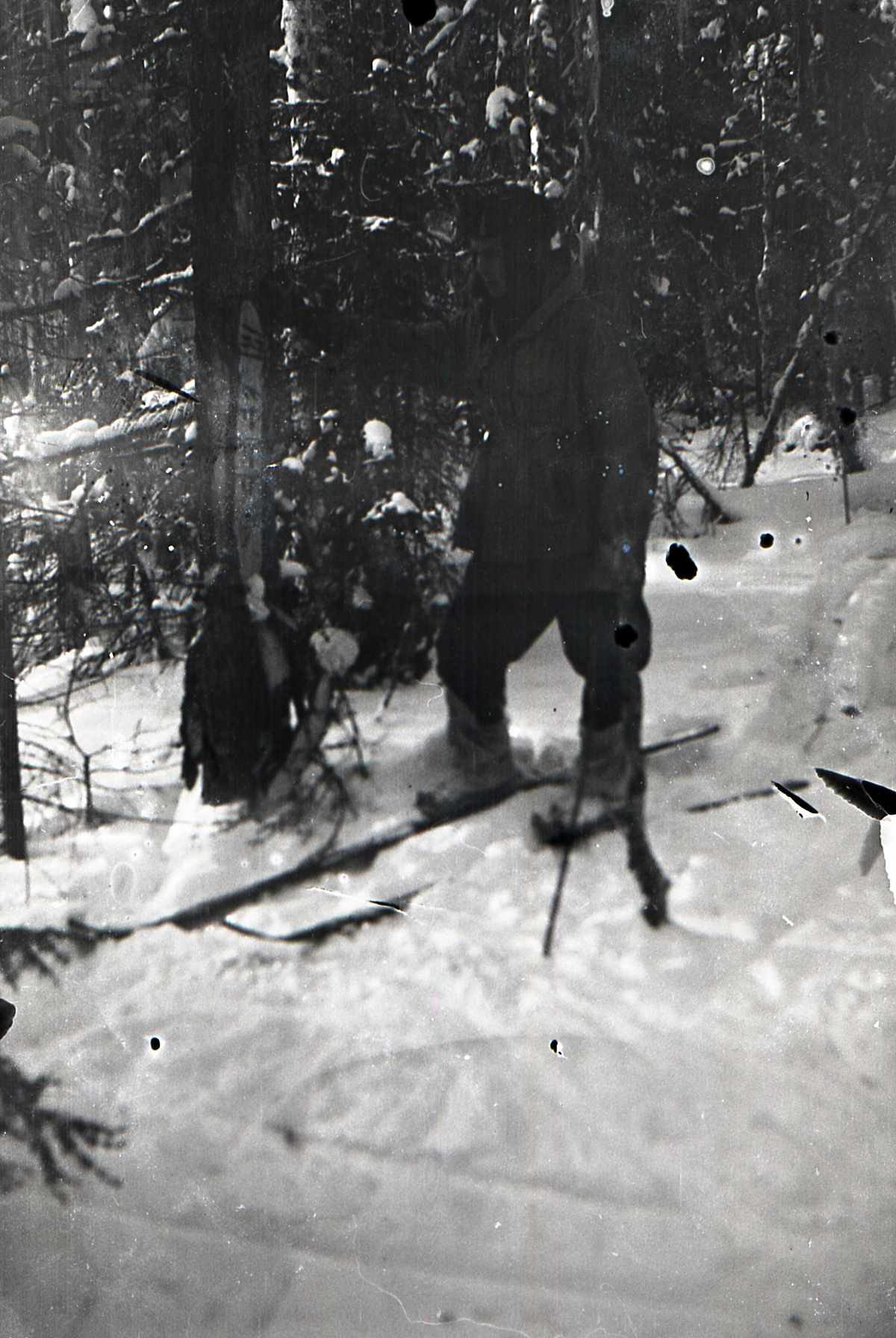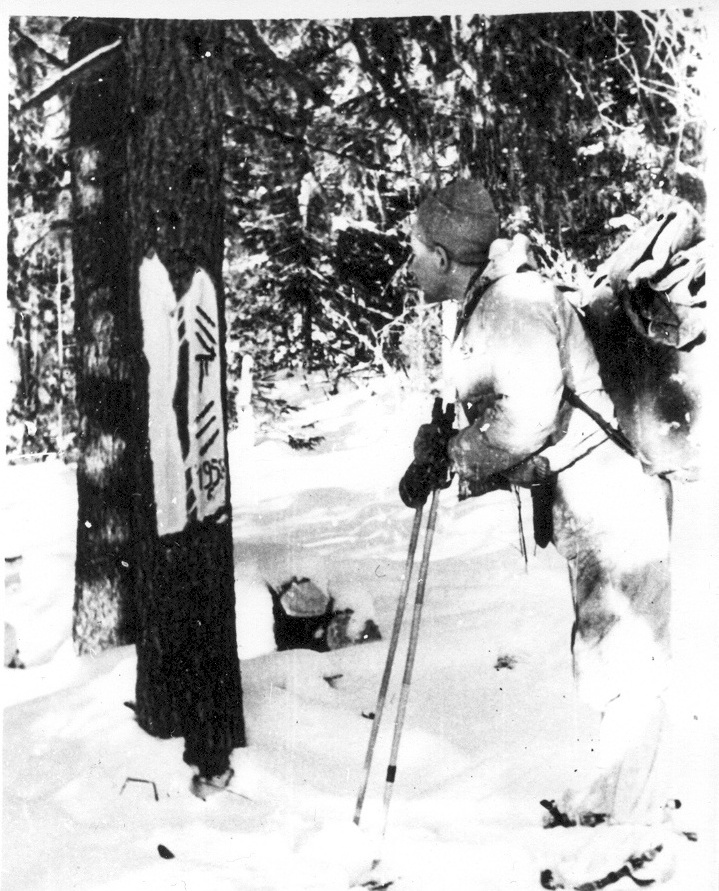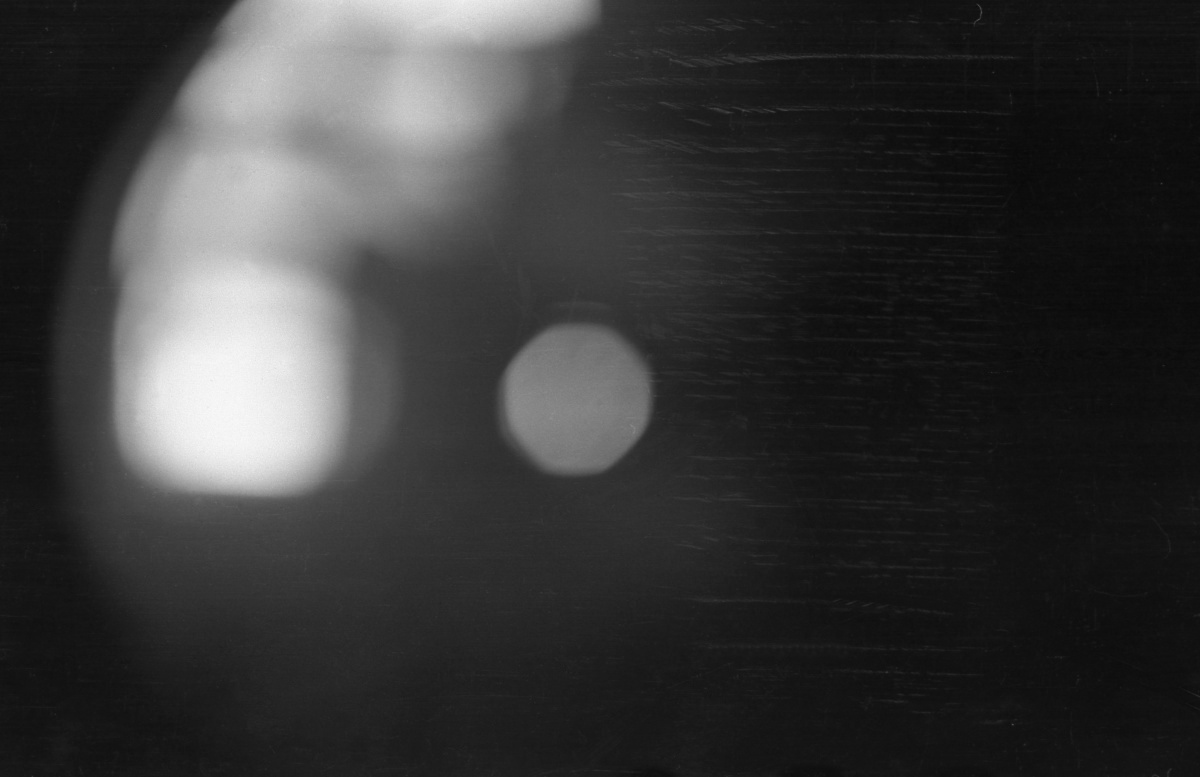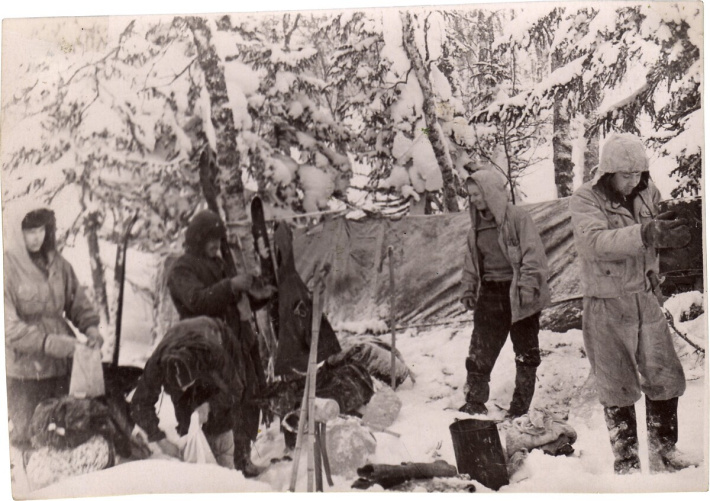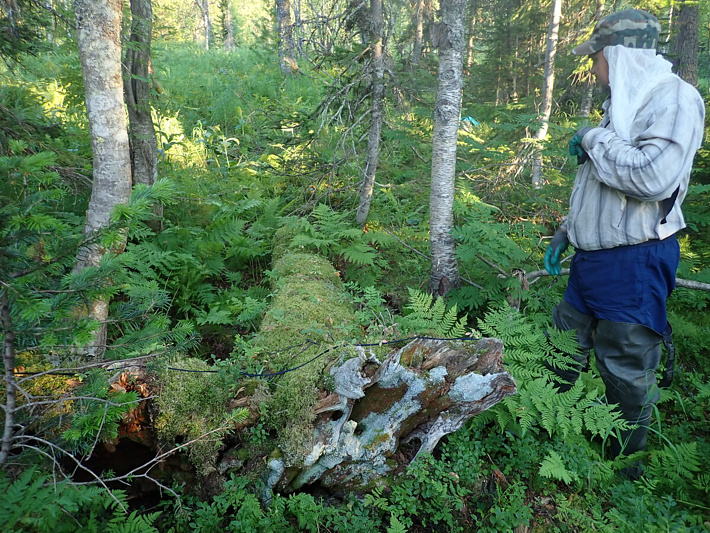
Theories
The lack of eyewitnesses has inspired much speculation. Soviet investigators simply determined that "a compelling natural force" had caused the deaths. Access to the area was barred for skiers and other adventurers for three years after the incident. The chronology of the incident remains unclear because of the lack of survivors.
|
Natural Paranormal
Time vortex Something else
Arctic hysteria |
Criminal Murder
KGB (aka Controlled environment) Special forces Mistaken for Gulag fugitives Mansi Snowmobile Something else
Teleportation experiment |
| Tree + Coverup | |
Avalanche or snow slab
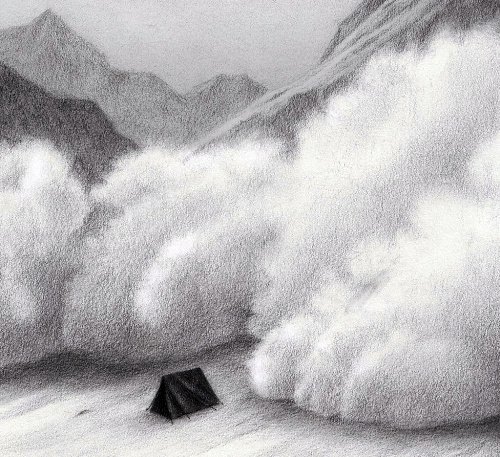
This is not an avalanche prone area. Kholat Syakhl is not tall (1079) and it is certainly not very steep [ * ]. Furthermore, the opponents of this theory suggest that hikers' diaries report a fairly thin snow cover. However, these facts don't exclude the possibility of a small avalanche. A portion of the upper layer of snow could simply shift and roll over the hikers as a slab of snow. This could damage the tent and create havoc among hikers who were suddenly trapped underneath several feet of snow. It would certainly explain why the tent was cut from inside. Further retreat would be necessary if the hikers were worried a second avalanche can strike again. According to the supporters of this theory Dyatlov group tried to make their way back to the Auspiya river and instead made a fatal mistake by descending into a valley of the Lozva river. After 4 weeks the snow that was rushed down the slope of the mountain was simply blown off by the strong winds that are common in the region. This would erase all signs of a natural disaster. However, this theory has its gaps. From what we can tell from the footprints left by the group everyone seemed to descent with relative ease. It is highly unlikely that three people with broken ribs and flail chest would be transportable at all. And here we see several badly damaged men and a woman walk without problems or even help from any of the members of the group. Secondly these men and women were experienced and well trained. They knew that chances of freezing to death is more likely than getting killed by an avalanche. Although the removal of the damaged tent from an exposed mountain side was out of the question, they had to retrieve all their warm clothes and footwear. Finally, why would experienced hikers retreated calmly, in order, all clustered together along the path of the alleged avalanche? Read more →
* In their scientific paper the Swiss avalanche theory ambassadors say they actually saw an avalanche on Kholat Syakhl, and this is true, only the spot is well known to everyone who has ever went to the Dyatlov Pass, winder or summer, since on the spot in question the snow never thaws complicatedly (see photos and profile of the slope →). The place was not investigated because it is 3 km away from the tent and has completely different conditions. Although avalanches can fall on this particular spot, it has nothing to do with what happened with the Dyatlov group. Read Borzenkov's analysis →
And finally if you see on the pictures on February 1st on the left and February 26th (according to Vadim Brusnitsyn who is squatting on the slope with his back toward the camera) on the right you can see part of the hikers gear that kept its vertical position on the slope weeks after the tragedy. Furthermore, the entrance of the tent is clearly elevated. Only the middle portion collapse probably due to hasty escape or weight of snow simply accumulated there.
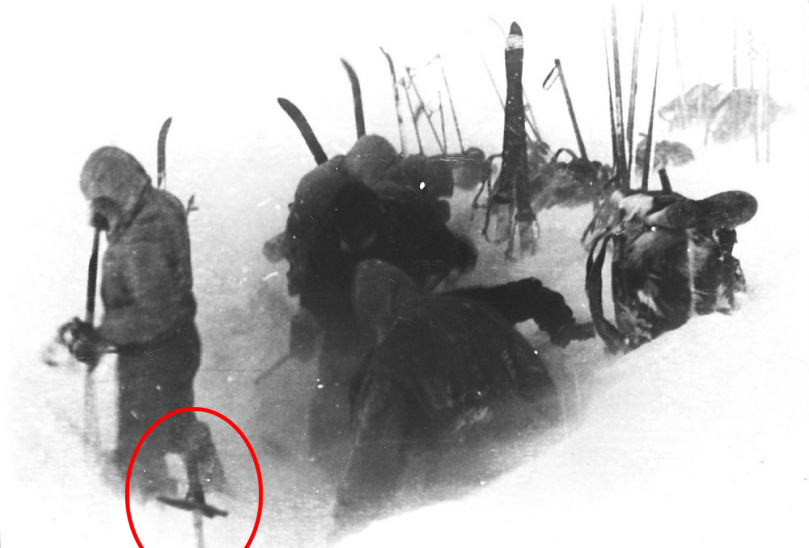
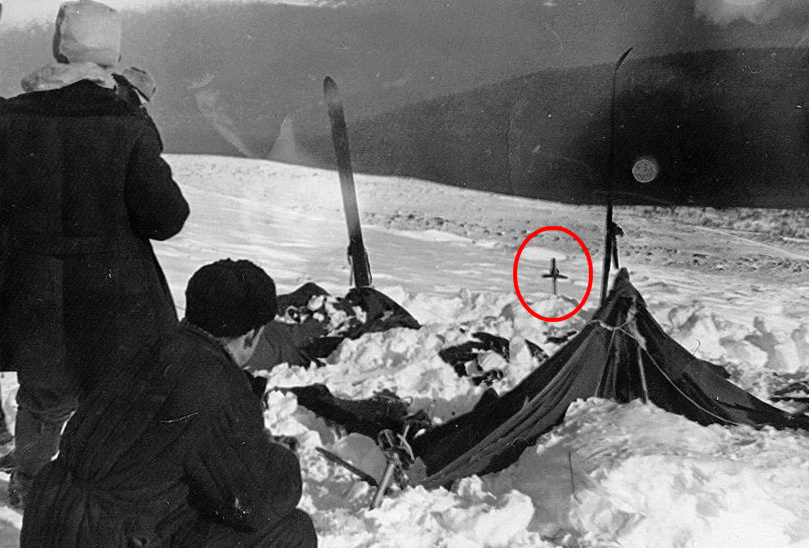
Lightning strike / Ball lightning
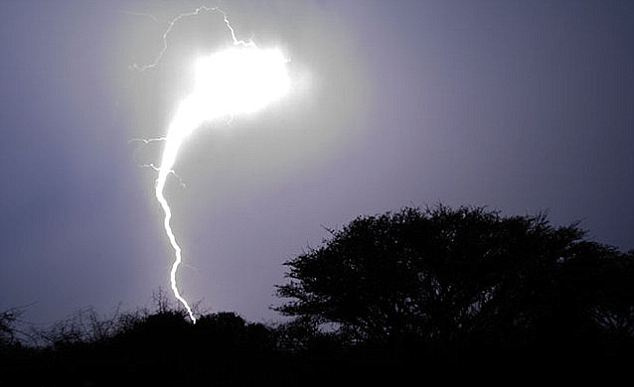
This theory is presented by Nigel Evans himself in the discussion section of this site.
"The tent slits, hot spot near the tent and a camera on a makeshift tripod suggest that they were observing something in the sky. Given that the local Mansi people blamed the golden orbs for the tragedy and the repeated sightings of lights in the sky from reliable witnesses in the same period together with photos from the group's cameras possibly of aerial lights, it is plausible that the group fled from the tent due to an occurrence of ball lightning [1] getting very close to the tent and hovering there melting the snow beneath to create the hot spot. The group then hurried to the treeline 1500 meters away and lit a fire whilst they waited for the object to disappear. The theory then describes how the two deaths at the cedar were due a single electrocution event (due to normal lightning strike or ball lightning) creating burnt hair, bleeding head orifices, large burns, burnt clothing, pulmonary edema and tree damage and the subsequent four deaths in the ravine due to an explosion event near to the den (again due to a more powerful lightning strike or ball lightning). Although cold weather lightning is rare it is possible see [2]. The theory suggests that the ravine lightning strike hit close to the den and vaporized a substantial quantity of stream water, snow and ice (positive polarity strikes - [3] can produce 300,000 amps and temperatures several times hotter than the surface of the sun, e.g. 30,000C) creating an explosion amplified by the confines of the ravine that threw the den and it's occupants 6 to 10 meters resulting in blunt force injuries similar to a car accident or barotrauma. The theory suggests that the three surviving members died in two groups, Rustem Slobodin was injured and urgently had to be returned to the tent assisted by Zinaida Kolmogorova. Due to snow drifts and high winds he collapsed on the journey and Zinaida Kolmogorova also further on due to the same plus exhaustion from the effort of assisting him. Igor Dyatlov remained with the ravine four as Lyudmila Dubinina and Semyon Zolotaryov although badly injured stayed alive for some time afterwards and Nikolay Thibeaux-Brignolle was unconscious. Igor Dyatlov may have stripped the two bodies at the cedar (turning the bodies) to provide more insulation for those still alive and possibly contributed some of his own. Some time later he decided to abandon his vigil and return to the tent but died being the only member of the group to have clear signs of hypothermia. Police officer Lev Ivanov, who led the official inquest in 1959, apparently favored the fireball theory."
[1] en.wikipedia.org/wiki/Ball_lightning
[2] en.wikipedia.org/wiki/Thundersnow
[3] en.wikipedia.org/wiki/Lightning
Katabatic wind
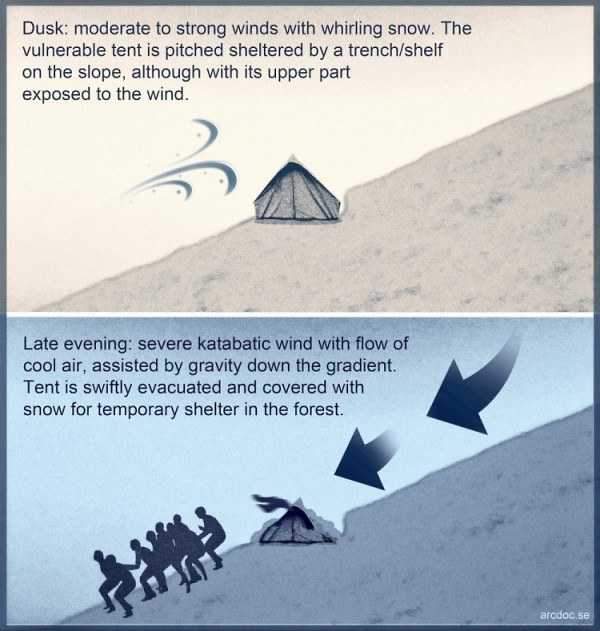
Illustration by Richard Holmgren
The katabatic wind derives from the Greek word katabasis (κατάβασις), which means “descending”. This type of falling wind can appear when cold air over a glacier or a mountainous area starts to flow down a gradient. The phenomenon can be described as a ball rolling downhill by gravity, hence it is also labelled gravity wind – a wind that carries high-density air from a higher elevation down a slope. The definition of a katabatic wind is sometimes also referred to as a fall wind. Since cooled air has a higher density than the surrounding atmosphere, the katabatic wind can sometimes accelerate to the force of a hurricane. The strongest of these winds are usually found on drops surrounding mighty ice sheets, but can also occur over cooled mountain areas similar to the topography surrounding the Dyatlov pass. A similar landscape to the mountains south of Otorten can for example be found in Sweden, in the rolling terrain of Anaris. In February of 1978, dammed cooled air was here put in motion very quickly with devastating consequences for a group of nine skiers. The group of two women and seven men were then overtaken by wind speeds up to at least 20 m/s – an explosive scenario that erupted out of a rather calm and pleasant skiing tour. Only one of them survived - this after being found far away from a temporary and insufficient snow shelter made by the core group. A Swedish wind record for such wind is for example 81 m/s which was documented in 1992 at the Tarfala research station. In this case we are not even talking about the ice sheet over Antarctica, where such winds are normally considered the strongest.
A katabatic wind could initiate when cold air atop a higher point begins to flow downhill, displacing warmer air below. If the lower elevations are comparatively much warmer - the stronger the wind. In most places where the phenomenon appears, it usually does so at night when the temperature drops. An interesting note in the Dyatlov group diary, made a short period of time before the accident, described a relatively warm wind associated to a “jet-engine”. The wind was blowing from the valleys below under a blue sky. This could potentially have laid the foundation for the unfortunate events that unfolded between the 1st and 2nd of February in 1959.
What is important to realize regarding falling winds, is that these appear quickly as opposed to a storm. A storm would give you time to dress and secure or dismantle a tent properly. A tent that is not built for extreme winds, would rather swiftly tear to pieces if confronted with falling winds - this unless it was saved in seconds. In the case of the Dyatlov group the only survivable scenario would be to run out, conceal the tent and to wait out the ordeal elsewhere, later to regain the buried equipment. If the event would continue for a longer time or if the outside temperature is far too low, the consequence would be deadly without suitable shelters or helping hands. One fast way to save a tent from disappearing in the wind, would be too cover it with the adjacent snow masses – this in turn sheltered behind an already prepared snow wall/shelf. In fact, collapsing a tent to reduce the chances of wind damage, followed by a shielding of snow to hold the tent down, is expected in such situations. In the event of a katabatic wind, the Dyatlov team acted skillfully by shadowing the steps above. This could in fact explain why the tent was located with a protective snow cover and a flashlight - likely used as a beacon for relocating the position. Such scenario with subsequent outcomes, was presented by the Swedish-Russian Dyatlov Expedition of January/February 2019, as the causes to the incident in 1959. Read more →
In the photos taken by the rescue team, clear traces of snow affected by strong wind can be seen pointing towards the tent from the peak of Kholat Syakhl. The actual pattern demonstrates heavily wind swept snow, where vortexes have hollowed out scoop-shaped cavities. These are comparable to so called zastrugi or in Russian, заструги. Extremely high winds would furthermore make it hard to stand upright. Any possible ice sheet or other flying light objects, besides extremely low temperatures generated through the cooling effect, could theoretically create austere body trauma. However, the severe injuries found on the last four recovered bodies should in the case of a katabatic event, be tied to other circumstantial evidence - such as pressure from a collapsed snow shelter and natural decomposition due to three months of exposure in the prevailing environment. The same can be expected from traces of radioactivity in selected clothes, associated to earlier commitment in the industry by members in the group. Possible lights or spheres reported in the sky, cannot be associated with a katabatic wind. However and with regard to the sky, katabatic winds do indeed explain sudden plane crashes in the region, were falling winds are one of the most unpredictable and dangerous phenomena associated to ventures in the air.
Infrasound
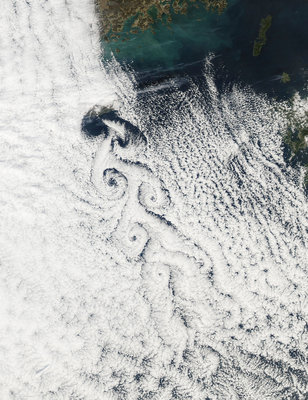
Karman vortex street seen in cloud formations
off the coast of Jeju, South Korea
As part of technological theory there have been suggestions that an infrasound might have been responsible for sudden unpleasant feelings among the hikers. New research into rare weather phenomena has suggested that a 'perfect storm' could have struck the campers in the night, panicking them so much that they would have fled the tent, and fallen victim to the brutal cold before they came to their senses. Donnie Eichar, who spent five years researching the incident, and undertook the dangerous trek himself, believes that a wind phenomenon called a Karman vortex street could have produced a terrifying, powerful sound which is proven to induce irrational fear in humans. Due to the unique topography Dead Mountain (all mentions of Dead Mountain instead of Mountain of the Dead refer to Donnie Eichar's book), which is a perfect dome shape, the fierce winds that blow through the pass could have been warped as they struck the blunt surface. The wind, which was blowing in a straight line, would be twisted into a series of small but powerful tornadoes which would tear down either side of the pass. The tornadoes, spinning fast enough to tear the roofs off buildings, would have created a deafening noise, even if they missed the tents, as Eichar's theory suggests. But under certain circumstances they could also produce a more subtle and terrifying phenomenon known as infra-sound. The opposite of ultrasound, infra-sound is a type of vibration in the air which has a frequency so low it cannot be picked up by the human ear. But a succession of studies has shown that it can have marked effects on the human body, including loss of sleep, shortness of breath, and extreme dread. Eichar, backed by scientists at the National Oceanic and Atmospheric Administration in the U.S., believes that the combination of the effects on infra-sound, the deafening noise of tornadoes, and the claustrophobic, pitch black tent could unseat even the most steady-minded adventurer.
Though the science sounds incredible, Eichar believes it is the only logical explanation for the situation in which the bodies were found. Although Dead Mountain is so remote and inaccessible that the weather phenomenon cannot be directly observed there in the winter, it has been observed in similarly-shaped locations, including the rock of Gibraltar and an array of other peaks.
In the right conditions, a flow of wind can be directed in such a way that it creates a vortex. These vortices are created in sequences by the moving air, and travel away in a fan shape. With sufficiently high winds and the correct angles, these vortices of wind could form powerful tornadoes, with the potential to emit large amounts of infra-sound, as well as cause damage by themselves. Eichar's theory supposes that the Dyatlov hikers' tent was directly downwind from the peak of the mountain, and far enough away that the whirling winds themselves did not strike the tent. But they would have been close enough for the effects to be felt – and heard.
Infrasound, vibrations in the air which are too low for humans to hear, was first observed in the 1960s. The waves, defined as anything below human hearing range of 20 hertz (the upper range is around 20,000), can be made by man-made objects as well by natural phenomena. Vladimir Gavreau, a French scientists, first noticed the effect of infra-sound on his body thanks to a badly-designed fan. When his lab assistants began suffering nausea for no obvious reason, he discovered that the discomfort was cause by the motor of a large fan, which was emitting the sound waves. A 2003 study in the UK found that a fifth of people exposed to infrasound reported feeling anxious, scared or unable to breathe properly. Another theory holds that the waves are linked to ghost sightings. Eichar's hypothesis for the Dyatlov pass holds that the whirling tornadoes would have been able to produce infra-sound in sufficiently high levels to induce panic in the slumbering hikers, after which the Siberian weather did the rest.
Gravity fluctuation
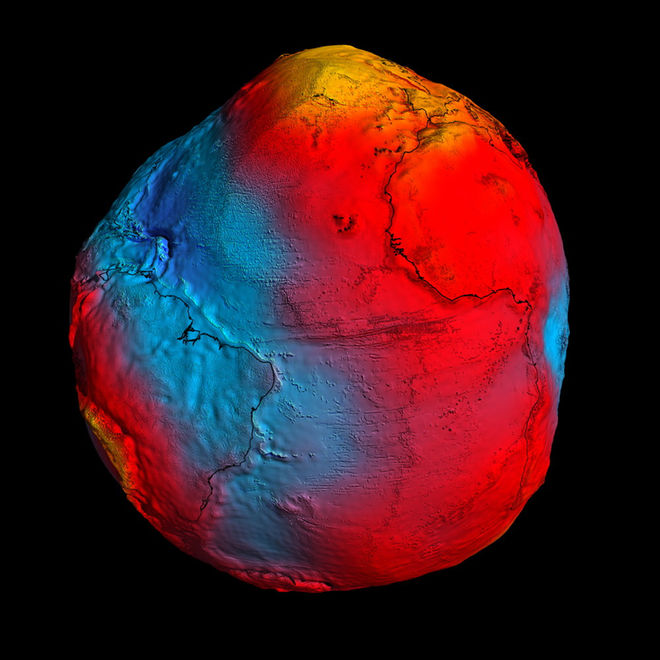
ESA's GOCE mission has delivered the most accurate model of the 'geoid' ever produced. Red corresponds to points with higher gravity, and blue to points with lower gravity. SPACE.COM
Credit: ESA/HPF/DLR
Russian scientists believe that the hikers came to the area where under certain circumstances the force of gravity can fluctuate. Petersburg physicist, Ph.D., Associate Professor of Institute of Engineering and holder of more than one hundred patents German Erchenko believes that the significantly decreased external pressure threw the hikers out from the tent.
Scientists have long studied thermodynamics, hydrodynamics, various aspects of the nature of gravity and weightlessness of bodies. He believes that Dyatlov group came to the area, which at the confluence of circumstances can have significantly decreased force of gravity. "It formed a corridor of a kind, in which Earth's gravity decreased. The hikers in the tent - sleeping or just getting ready, had time to undress. And then "unknown force" began to lift them up off the floor and drag them into the direction of the corridor", said the scientist. As the outside air pressure was significantly lower than inside the tent, "people began to push outwards", the scientist said. "The emerging hikers instantly pushed the tent from the inside, and since the pressure in their bodies still remained high, they received "unexplained" internal injuries - including broken bones.
"Some of the hikers died instantly, others remained alive for some time, but the bodies once outside the tent remain hovering in the air as though lying on a horizontal surface. In this position same force pulled them to the side", said the physicist. According to Erchenko's calculations, the phenomenon lasted only a few minutes. This period of time was enough to throw people in 1-1.5 kilometers distance. "They flew one by one or in groups from the tent, to be scatter on the slope and in the woods. When they were falling in the snow from a height, not being able to protect themselves, they received the injuries on their faces, which were disfigured", adds Erchenko.
The physicist says that if the hikers did not get out of the firmly fixed on the ground tent, perhaps they would not have died. In addition, according to the scientist, such events are not uncommon on the area. People, cattle and wild animals are dying in a similar manner with an alarming regularity. "For those who in the future will go visit Dyatlov Pass, it is worth bearing in mind that the corridor where the gravity to Earth is decreased can "open" again. Hunters in the area often go in the woods and the big question "Why is this happening in this place" needs yet to be surveyed and answered, summarize the specialist. ADFAVE.RU
Reindeer
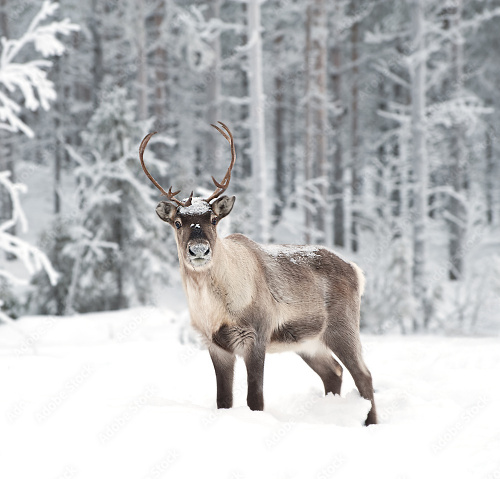
Researcher Aleksander Konstantinov published this theory in Ural Stalker in January 2013. He is pointing out the behaviour of the reindeer which when fleeing form a danger prefer to follow a trail and that the Dyatlov group may have pitched their tent on one. According to Konstantinov all the injuries could be explained with a reindeer tripping over the tent. The weight of an adult deer is 100–200 kg.
"All the most severe injuries on the hikers (in an unheated tent they lay close to each other) could have been caused by one deer, which, having stumbled into a snow pit and (or) tripped over stretchers, fell on S.A. Zolotaryov and L.A. Dubinina, who lay at the end (northern) wall of the tent, across its long axis (like the rest of the hikers), with their heads in the direction to the east (this is exactly how, according to M.A. Akselrod, the hikers were lying in the tent). As a result, S.A. Zolotaryov, who was lying on his left side, had 5 broken ribs on his right side, and L.A. Dubinina, who was lying on her back, - 4 right and 6 left ribs (the asymmetry of the fractures is explained by the fact that part of the blow fell on A.S. Zolotaryov, who was to the right of her). Apparently, the deer fell, bending its legs, which made the blow more rigid. After the fall due to inertia and as a result of its own movement, while rising to its feet, it carries over the lying Z.A. Kolmogorova. She may have been crushed by the body of a deer, but she was not seriously injured, but it is possible that she received an injury that later caused a nosebleed [4]. Further, the deer begins to quickly rise to its feet (at the same time, the pressure on the support increases significantly as a result of the transfer of the main weight of the body to the supporting leg) and causes craniocerebral injuries to R.V. Slobodin (a fracture in the frontal bone [5] 6 cm long and hemorrhages in the right and left temporal muscles [6]) and then N.V. Thibeaux-Brignolle (fracture of the skull measuring 9 by 7 cm, with a depressed area of the temporal bone 3 cm long, 2.5 cm wide and 2 cm deep). Moreover, the depressed fracture of the skull was caused by the "half" of the supporting hoof of the deer, trying to maintain balance on an unstable support."
Wolverine

Wolverine (lat. Gulo gulo) - a large representative of the mustelids subfamily. They love to eat, for which they got their name in Latin: translated Gulo - glutton. The weight of an adult individual ranges from 11 to 30 kg. They are known for their fierce and cruel temper. It is also the only beast that does not run away from danger, but attacks first. There are cases when a 30-pound beast has torn a bear, and there is a constant hunt for elks. And it's not just the character of the fighter. In addition to sharp claws, teeth and powerful jaws have a "secret weapon". Like a skunk, if absolutely necessary, they can spray a rather stinky liquid - a discharge from special glands. Facts this theory is based on:
- Testimonies of traces seen in the area (case file sheet 231 - Anyamov witness testimony)
- The group was eating at the time when something made them flee the tent, they were cutting loin, the smell of food had a hypnotic effect on a hungry, voracious beast.
- The wolverine tried to climb inside the tent through the main entrance, most likely, the reaction of the hikers was to drive the predator away by hitting the beast with all sorts of objects, including their cameras, hence the broken light filter on Krivonischenko's and deep scratches on the case and torn strap on Slobodin's cameras (case file back of sheet 5 - Crime scene investigation report)
- The wolverine tries to escape and gets entangled in the tarpaulin of the tent. Once trapped, the wolverine splashes its "chemical weapons" indoors. In a matter of minutes, the tent is filled with unbearable stench. Panic reigns inside the tent, dark, unbearably stinks. Chaos begins. It is impossible to get out through the main passage - a beast entangled in a tarpaulin is scared and no less than the hikers, but much more dangerous. At the same time, a staying inside the tent is impossible. Someone decides on radical measures and cuts the slant of the tent. The group gets out and gradually moves away going down the slope. Here the hikers are planning to make a fire, warm up and air out.
- Despite the fact that they left the tent quickly, as if fleeing from someone, they walk slowly along the slope.
- Someone throws off their outer clothing (case file sheet 70 - Maslennikov witness testimony), apparently trying to get rid of the unbearable stench. No one wants to return to the tent soon. Most likely, everyone understood that it was necessary to simply leave the predator alone to get out of the tent and then return. In the meantime, decided to warm up by the fire.
- Events began to develop in the evening, first, the hikers dined not later than 7 PM, and secondly, the weather in the evening of February 1 beat the temperature record of warming. Meteorological reports showed a value of -10°C, but with the onset of night and the approach of the Arctic cyclone, the temperature dramatically drops to -28°C degrees.
- The theory calls the strange color of the faces and hands witnessed by Kolevatov's sister at their funerals (case file sheet 272 - Kolevatova witness testimony). I personally don't see how the wolverine secretion can stay evenly over hikers faces and hands, but this is the least of my problems with this theory. (ed. note)
- The search dogs behavior was remembered by a pilot to be strange. According to his words they didn't want to get out of the helicopter. The dog handlers had to drag them out. The theory is that the search dog were appalled by the wolverine odor.
Yeti / Snowman / Menk (as the local indigenous people call it)
The Profound Awfulness of Discovery’s Russian Yeti: The Killer Lives
Discovery Channel “documentary”, Russian Yeti: The Killer Lives makes a sensationalist hash out of a genuine historical mystery—the tragic deaths of nine hikers in the Ural mountains in February of 1959. Known as the “Dyatlov Pass incident”, this unsolved cold case has unusual aspects that give it something of an air of the inexplicable, leading to the rise of conspiracy theories and paranormal speculations. Notably, though the bodies of the hikers were eventually recovered by a search party, they were found scattered over a large area in states of partial undress, as though they had fled their tents in the night in a panic. Perhaps, some speculate, they were running from someone—or something? Cue X-Files theme.
I shouldn’t snark. It’s ghoulish to make hay from the untimely deaths of other people—in this case, people who have surviving loved ones today. But mystery-mongering television programs have rarely found a tragedy they weren’t willing to exploit—and distort.
Russian Yeti: The Killer Lives caps a marathon of Discovery monster hoaxes (both of their infamous and profitable mermaids hoaxes and last year’s Megalodon hoax are playing again earlier today). In this program, hosts Mike Libecki and Maria Klenokova set out to solve the Dyatlov Pass incident—or rather, to pretend on air that it had something to do with the Yeti.
For a detailed critique of the program’s claims, see this useful analysis over at Doubtful News. Short version: we don’t know what happened to those poor people, but it’s easy to posit completely plausible explanations which fit the facts. The party may well, for example, have fled from what they believed was an imminent avalanche.
Tragic, plausible scenarios are in ready supply. They’re just not good television.
You know what is good TV? Monsters. Huge, terrifying, tongue-eating monsters. (Much is made of the assertion that one hiker was missing part or all of her tongue — plausibly bitten during a fall, skeptics suggest, though her body was also found with other presumably post-mortem soft-tissue damage — almost inevitable after weeks of exposure in the forest.) Never mind that we have no particular reason to suppose that the Dyatlov Pass case involves Yetis in any respect (nor, for that matter, aliens, vampires, or griffins). Never mind that Yetis are probably best thought of as a modern myth, as Don Prothero and I discuss in our book Abominable Science! When it comes to the paranormal, media producers are delighted to untether themselves from all responsibility. For all the investigative posturing of programs like Russian Yeti: The Killer Lives, the producers will sacrifice anything — facts, plausibility, dignity, a respected television brand — in the pursuit of a ratings monster.
How can you construct a two-hour special about Yetis around a case that has nothing to do with monsters at all? How can such vivid tapestries be woven from such insubstantial stuff? Tabloid television’s traditional filler techniques are the pregnant question, the bald declaration, and the provocative non sequitur. Russian Yeti: The Killer Lives makes generous use of all three.
"When I found out one of the students was missing a tongue immediately I knew this was not caused by an avalanche. Something ripped out the tongue of this woman," Libecki flatly declares near the beginning of the program. Turning to a Soviet-era Yeti expedition, the narrator asks ominously, "why do so many files related to the expedition remain classified?" I don’t know, because the show neither explains it nor demonstrates that any such files are classified at all. Citing one man’s decades-old recollection of having seen a military-style boot cover (a gaiter) in the vicinity of the disaster, the show leaps to the claim that "Somehow the military reached the crime scene before the search party. Yet there is no official record of any military presence in the area when the hikers died — begging the question, was the yeti expedition actually ended?" Begging the question indeed.
This show about Russian history declines to interview any Russian historians. Instead we’re treated to interviews with cryptid proponents Jeff Meldrum and Igor Burtsev. But this sort of cable mystery-mongering does cryptozoology few favors. Burtsev complains that the production came to him with a preconceived agenda:
I was interviewed by [Russian Yeti: The Killer Lives director] Neil Rawles too. I understood that he was making a program to fit the solution of the puzzle under the ready answer. And he tried to get from me the same answer about fault of the yeti in group’s death. For this he was shooting me for many times asking only one question: could be yeti a reason of the death? But I couldn’t agree and rejected that…
The central showpiece of the program is a black and white still photograph showing a dark, unidentified figure standing in the trees. It is introduced with stark onscreen text: "The following image is one of the last photos taken by the hikers. It is being shown on television for the first time." This picture is presented as evidence that a Yeti was stalking the doomed party through the woods — their inhuman killer caught on film. What are we to make of this “extraordinary photographic evidence"?
To begin with, it doesn’t look much like a Yeti. With its short, rather thin arms, it looks a lot like a person in a coat. Its very lameness as Yeti evidence may be the best sign of its possible authenticity — authenticity as a photograph taken during the expedition, that is. (Probably a photograph of a member of the party.)
But the faked footage and invented on-air "scientists" of previous Discovery / Animal Planet hoax “documentaries” leave us little choice but to consider other, more cynical possibilities when viewing programs of this type on Discovery’s networks. Could the photo have been created for the production? How much of this "documentary" was simply made up from whole cloth? Libecki appears to be an actual person, at least — unlike “Dr. Paul Robertson” of Mermaids: The Body Found and Mermaids: The New Evidence, who was a fictional character played by Canadian game designer Dave Evans. (For more, see my 2013 Junior Skeptic story on mermaids inside Skeptic Vol. 18, No. 3.)
"No doubt it’s one hundred percent real," Libecki says of the haunting photograph, explaining that it was included within the original, uncut negatives. Yet such is Discovery’s tattered credibility on such topics that we can’t take even the simplest facts for granted.
The rough cut I saw ends with the disclaimer, "This program contains elements of dramatization." Yes — but how many? Reading this and thinking of Mermaids: The Body Found’s vague, blink-and-you’ll-miss-it disclaimer that "certain events in this film are fictional," I can only reflect on the damage Discovery’s phenomenally successful hoaxes have done to their once trusted nonfiction brand — at least for me.
More to read:
Discovery’s Mountain of Mystery Mongering: The Mass Murdering Yeti - Benjamin Radford, Skeptical Inquirer
"Now we know snowmen exist" - a hoax that this theory was based on
The stove
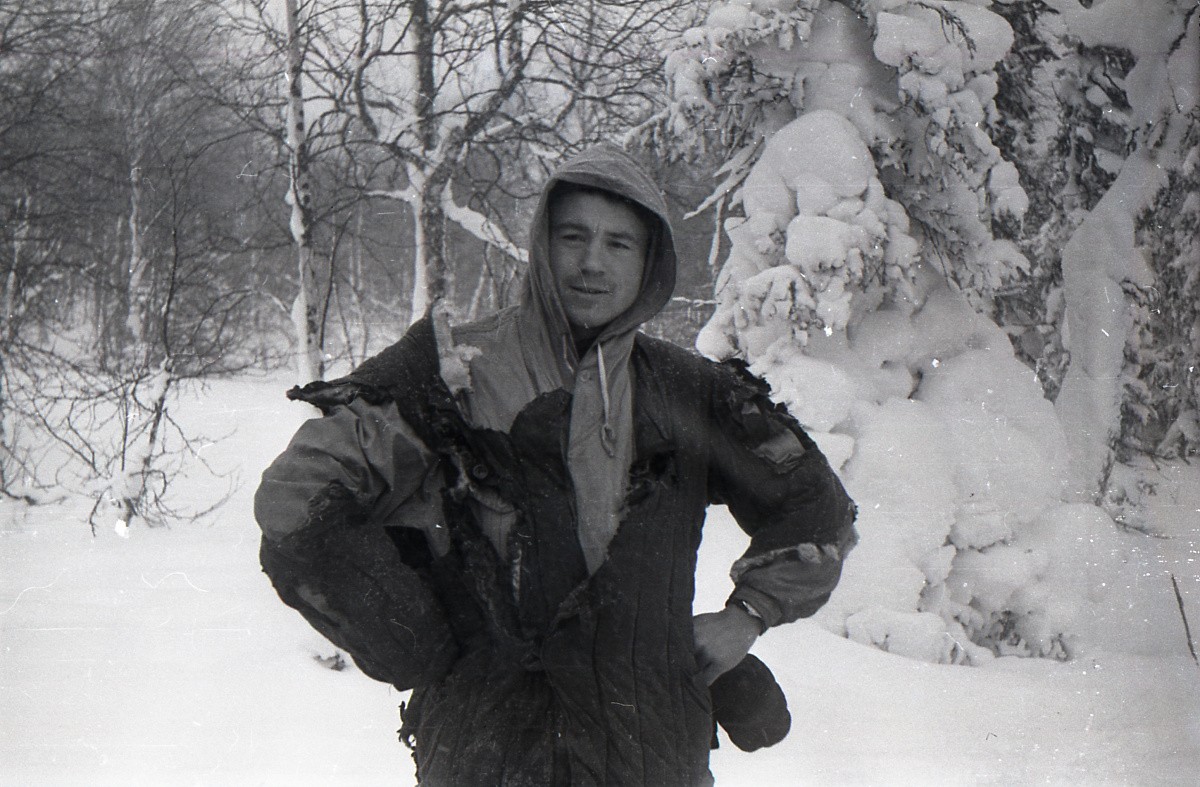
This photo is taken the day before the incident. It's possible that sparks from the stove had accidentally set the jacket a flame.
Clark Wilkins in his book "A Compelling Unknown Force - The Dyatlov Pass Incident aka Six Hours to Live" promotes the theory that the hikers left the tent due to smoke from the stove. The problem with this theory is that they wouldn't need to go a mile down the hill to escape smoke in the tent. Even if they thought it could be a fire in the tent they wouldn’t need to go so far from it. They could easily put it down with plenty of snow around, and easily remedied by opening the tent up and ventilating. They certainly wouldn't completely abandon the tent without their shoes and coats. Another weakness of that theory is the consistency of reports by witnesses and investigators, that the stove was not assembled and still in its case.
Next video has nothing to do with Clark Wilkins. Captions 13:20-16:00 from the video below:
"Why would they leave the tent? I would argue that the only thing that could make them leave would have to be an immediate thread inside the tent. if something was outside, such as an animal or a UFO, then there would be no reason to cut the tent open. There were no signs of an avalanche, however, they could have excaped believing an avalanche was tumbling towards them. The problem with that theory is that the footprints showed them walking in a calm and orderly manner down the slope as opposed to running away in panic. So something caused them to panic inside the tent but once outside they calmed down and made a conscious decision to walk down the slope. Their external stove was a completely unique and homemade design as the leader of the group had built the stove himself. We know they had used the stove on the night of the incident before the incident took place as partially eaten pieces of fried ham and bacon were found inside the tent. I think that after disassembling the stove and removing the exhaust pipe, the embers inside the stove were accidentally reignited. As the exhaust pipe had been removed, the smoke would have filled the tent in seconds. As they attempted to get control of the flame they cut a few holes at the top of the tent to vent the smoke. When that didn't work and it became increasingly difficult to breathe, the side of the tent was slashed open and they all escaped in a state of panic. The burn marks on their bodies and clothing could have been from the scolding hot metal stove. Several member sof the group were found with blood around their mouth and coughing up blood could be a symptom of a smoke inhalation. Some of them were intoxicated which could've effected their judgement as well as their sensibility to the cold."
There are no facts to support that there was cooked food or that anybody was intoxicated. The goup carried vodka but no empty bottles were found.
Methanol poisoning
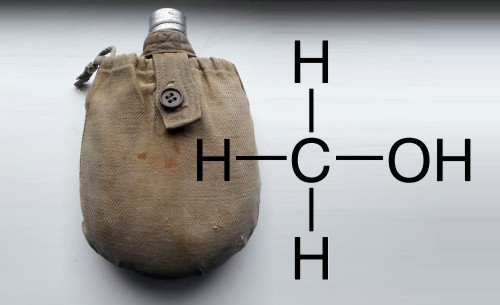
Methanol poisoning symptoms may include a decreased level of consciousness, poor coordination, vomiting, abdominal pain, and a specific smell on the breath. Decreased vision may start as early as twelve hours after exposure. Long term outcomes may include blindness and kidney failure. Toxicity and death may occur even after drinking a small amount. (Wikipedia)
Fans of this theory point out the following aspects of hikers behavior that might be explained with methanol poisoning:
- cutting up the tent form inside - decreased level of consciousness, poor coordination
- going down the slope abreast, instead behind each other i.e. holding hands - blindness
- cutting up branches to make fire while there is dry wood laying around the cedar tree - blindness
- high amount of urine in Dyatlov's bladder about 1000 cm3 - kidney failure
The way methanol made its way into hikers systems has into three versions:
- Galina Tsygankova - local melting of snow in February 1959 and increased radioactivity in the area of the incident may have been caused by iodine-131 methanol spilled over the pass. Aircraft AN-8T was transporting methanol radioactive solution for research in Vuktyl.
No confirmed data of melted snow, increased radioactivity or aircraft in the area. - Ben Fyrth - during the evening meal, when the group was hungry and thirsty, someone has introduced the methanol based stove fuel into the food, either maliciously, accidentally or to loosen the party up. There was no liquid stove fuel. Dry alcohol was known at the time but it was provided only to official expeditions.
By all accounts Dyatlov group used only wood for their stove.Just to exhaust the topic - in the 60s dry alcohol tablets existed, but even if you say that somebody could have slipped a tremendous amount of tablets in their food, the main ingredient in the dry alcohol is not alcohol at all but Hexamine (Wikipedia). We have to scratch this theory because the stove was found in its case, disassembled, and because there was no liquid food to slip the tablets into. The hikers were cutting loin that night. There wasn't anything warm, like tea or soup.
We reached out to Askinadzi with the question did they use any dry alcohol tablets at the time. His answer is:
"We never used dry alcohol, not to show off, but because it was difficult to get it, like everything else." - Rostislav Zhuravlev - everybody knows that hikers carry alcohol for medicinal purpose which they sometimes drink in small quantities to warm up. Since alcohol was very hard to find and Yudin complained that he couldn't provide alcohol for the trek but a flask with alcohol was found, which was only noted that the smell from the content dissipated so the searchers couldn't tell if it is vodka or alcohol, leave alone ethanol or methanol. This theory goes like this: Dyatlov group, after hard work to pitch the tent drank alcohol from their flasks to warm themselves, which turned out to be methanol. They were blinded, there was a panic and therefore they cut the tent. They ran down like blind kittens.
But decreased vision may start as early as twelve hours after exposure.
Shrooms
Fly Agaric (Amanita Muscaria) are very toxic, but they become less lethal when dried out. Conveniently, they grow most commonly under pine trees (because their spores travel exclusively on pine seeds), so the shaman would often hang them on lower branches of the pine they were growing under to dry out before taking them back to the village. As an alternative, he would put them in a sock and hang them over his fire to dry. I wonder where the Christmas socks came from.
Another way to remove the fatal toxins from the ‘shrooms was to feed them to reindeer, who would only get high from them — and then pee, with their digestive systems having filtered out most of the toxins, making their urine safe for humans to drink and get a safer high that way. Reindeer happen to love fly agarics and eat them whenever they can, so a good supply of magic pee was usually ready and waiting all winter. In fact, the reindeer like fly agarics so much that they would eat any snow where a human who had drank ‘shroom-laced urine had relieved himself, and thus the circle would continue.
When the shaman went out to gather the mushrooms, he would wear a red outfit with either white trim or white dots, in honor of the mushroom’s colors. And because at that time of year the whole region was usually covered in deep snow, he, like everyone, wore tall boots of reindeer skin that would by then be blackened from exposure. He’d gather the tree-dried fly agarics and some reindeer urine in a large sack, then return home to his yurt (the traditional form of housing for people of this region at that time), where some of the higher-ups of the village would have gathered to join in the solstice ceremony. Read more
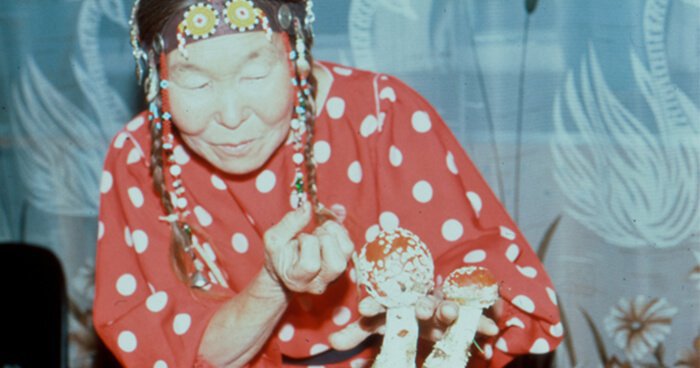
Theory 1
Svetlana Oss in her book "Don't Go There" believes that Khanty hunters who had taken Agaric Fly to get themselves in a killing mood killed Rustem Slobodin with a dynamic head kick and inflicted the chest injuries by jumping or bouncing on the chests of Yuri Doroshenko, Lyuda Dubinina and Semyon Zolotaryov. Svetlana claims, they wanted to avoid shooting so as to foil investigators which is why they sanitized the tent area covering their footprints with snow and making the cuts themselves, thereafter forcing the hikers to discard clothing and footwear which is why Dyatlov's jacket and flashlight were found outside the tent. Svetlana interprets frame №17 from Thibeaux Brignolle camera as a hunter who was following the group and was surprised when they held quietly till the stalker briefly emerge and this photo was taken before the figure retreated back into the woods. This would also explain their choice to pitch the tent away from the treeline. Zolotaryov and Thibeaux were almost fully clothed and wearing some kind of footwear. Zolotaryov was found with a camera around his neck. We speculate that the two might have gone outside the tent to relief themselves and Zolotaryov took his camera because something interesting was going on. Read more about Valentin Yakimenko's study of the damaged negatives found in Zolotaryov's camera. Related to this theory questions are if Khanty hunters stalk them and did the Shaman interpret the unusual lights in the night sky (if there were light) as permission from the spirits to uphold their tradition that to them the mountain was sacred and forbidden to strangers, especially to women, who may not gaze upon it? Indeed had some of the group cut slit holes so as to surveiy where their stalkers might be? The case of the Khanty hunters made by Svetlana Oss ends with a possible clue regarding a rifle that somebody bought from a native who implied while drinking that he witnessed the incident.
Theory 2
The possibility is that the group may have ingested the mushrooms, either intentionally or unintentionally, and suffered the delirium and sweating with acute doses. This would account for what appears to be the bizarre behavior of the group on that final night.
Time vortex
The title of the video is "They aged on the pass". The author claims they look 40-50 years old in the photos before they died but Zina, so the horror didn't affect her. Time vortex, windrose. He says we don't know what's in many photos saying that the people in the photos are looking at mysterious devices and seem strange in general. (I know what's on all the photos in question, but the author says it's a mystery what's on the photos. They are mainly labaz, the dam they built so the bodies are not washed down the river, the radio etc.) What's in Zolotaryov's pocket, why is Kolevatov looking at Zolotaryov in horror (but the rest don't pay any attention to the conversation). The author constantly says that there are photos he doesn't want to show because they are too horrific, he is reminding us to watch the previous and next episodes for more details, says there are artifacts that only he can see in the background of the photos but in general - pacing himself, saying to watch next episode. Presence in the upper left corner (but he is showing photos from other treks and saying that they are of Dyatlov group when they are not). Mispronounced (*see note at the bottom) Rustem's name as Rustan (I mean - he can edit this.) He is showing searchers looking at the ravine and finds it very strange that they are looking in that direction. He says "what are they looking at?" (Well, the footprints point there, that's what.) The author sees monsters in the woods, and thinks the searchers are looking at the monsters. The two figures that look like bowing at the rock (ed. - I have them on the back cover on "1079" just because they look religiously bowing at the rock), he says it is for real, that this is a praying ritual and the rock is the obelisk.
The author of the video says that he is in possession of information about what the boot rock/obelisk is, but he is not telling. Maybe in some future episode... He calls blotches on photos UFOs. Author shows photos of the hikers (from their personal archives) suggesting we haven't seen them. And again, he keeps saying "Some photos I am not going to show you because they are scary" and he doesn't mean post mortem, he is following the trek. He speaks as if we don't have access to all the photos from the trek and only left at his mercy to show us "some of the not scary photos". He says that Dead Mountain 2020 may have new information under the fictional plot and we should study it. (I met the director in Yekaterinburg while filming with Discovery, they asked us, and me in particular as an expert, for any new information). Zina in a photo from the trek is talking on a smartphone, the author sees other advanced devices not freely available at the time. The author says they are a very "special" group, uniquely selected for a special mission. Testing new generation weapons. The radiation comes from UFOs. In the photo where Zina has sugar cubes in her palm the author says that she is feeding an "invisible elf". He was either invisible, or they tampered with the negative or the group was especially instructed to keep the "elf" out of the picture. In this photo there is a creature crawling out of the woods and a UFO flying in the sky. Tibo is levitating in this photo and this proves that they were all on a special mission, they were all on it and were specially selected each with its own powers. There is also a UFO in that same photo. Two UFOs in the sky on this photo.
The photos are not damaged but the defects are distortion due to the special area in the cosmos. Then he goes into mythology, the Mansi goddess Zolotaya Baba (aka Sorni Nay), the date, place, their number (9) and I don't know what converges into a special confluence that the group was supposed to be there because something was supposed to happen... in the universe. BUT we don't know the exact date because all the dates might be altered. Then he goes into the retelling of the plot of the movie as a real event literally - the shaman woman warned the group, Yudin was the only one to listen, he faked his illness and got back to safety while the rest continued with the mission. Zolotaryov also had special powers, remember they were all superheros. Igor was trained to find a special artefact that belonged to the Mnasi goddess. But then the author contradicts himself by saying that they had to be 9, a special number. Either Yudin bailed out or turned back because he was surplus. (Doesn't make sense even in his universe). Nine shamans died there. He goes into the legend of 9 dead people. He circles back to the hikers being aged, except Zina, Zolotaryov was old to start with and Kolevatov - we don't have enough photos of him. This is the most original bit in this video - the hikers got into some time glitch because their mission was "special" and aged prematurely. Some of them did. The Author doesn't offer any explanation. He finished with the words: Let's continue researching i.e. to be continued.
Arctic hysteria aka Pibloktoq (ru - meryachenie)
This theory become popular after many people started comparing the Dyatlov Pass and the Chivruay Pass incidents (read the article). The Lovozero native residents introduced the "meryachenie" as a possible cause of the strange behavior of the hikers i.e. disorientation, loss track of time, not feeling cold, walking in trance. Other symptom of this illness can be aggression and atypical for the person behavior in general. Sámi people call it "meryachenie". The Eskimos' name for it is "The Call of the North Star". Those who become under the spell of this phenomenon begin having both visual and auditory hallucinations, and exhibit very strange behavior such as shedding their clothes and inexplicably walking northward. Another word for it is pibloktoq. These are all different local names for Arctic hysteria.
The problem with this theory is that it has been observed only in native peoples. Non-natives often observe and report, but they have never been affected. They see it so often that some speculate that the natives are throwing a tantrum because of the invasion of the strangers in their lands. Some explain the onset of the episodes to be triggered by the stress from the encounter with technology and sudden devaluation of their believes, and the believes of their ancestors. Other say that it is malnutrition and poor education. But the fact remains that it affects natives and not passing hikers.
Just throwing in the mix, after being supposedly affected by this disease they didn't exactly move North. No matter how you look at it, they didn't hear "The Call of the North Star".
Secret launches
The celestial phenomena that accompanied the Incident almost convinced everybody that the skiers’ lives had been sacrificed to the new Soviet idol – the rocket. In the criminal case, there is a radiogram of particular interest, sent to the headquarters of the search party:
RADIOGRAM TO SULMAN
3/2-59 yr. — 18:30
[…] the main mystery of the tragedy remains the exit of the entire group out of the tent […]
The reason could be any extraordinary natural phenomenon, such as the flight of a meteorological rocket, OBSERVED ON THE 1st OF FEBRUARY IN IVDEL and by Karelin’s group [stop]
Tomorrow we will continue the search [end]
A vague evidence of the “rocket version” once managed to reach Vladimir Korotaev:
“Many years later, I talked to some scientists from Korolyov’s circle, the office of academician Rauschenbach, to be exact. It was hinted to me that, so they say, there were some tests being done.” All the requests sent to various launch sites by researchers, however, yielded no results: there had been no rocket launches in the Soviet Union from the 1st to the 2nd of February. Perhaps, the relics and stigmas of the rocket cult can be found in the Sverdlovsk taiga? Since the time of the search party operation, there were rumors of a secret training ground located somewhere near the site of the accident. Locals still relate legends of meetings with military patrols in the middle of the taiga, holes in the hillsides sealed with concrete, and the sound of a train that comes from under the ground in the woods.

Kizilov Gennadiy Ivanovich, a journalist from Yekaterinburg, is the first one and most avid advocates of the staged crime scene theory. He points out some major inconsistencies and conflicting testimony of witnesses and rescue team and says that this speaks of something much more sinister that sloppy investigation and that Dyatlov group have witnessed some secret trials or experiments that no one was supposed to see, and were deliberately liquidated by military forces. Kizilov concluded that the whole rescue operation was a farce and suggested that, a few days prior to the arrival of the search parties, "stage workers" were on the scene to prepare what was to be found by the rescuers. In order to avoid the disclosure of the secret facilities and to hide their crimes, the military and KGB removed the dead bodies from the real place of their death and brought them to ridge at 1079. Entries in the diaries of the group describing their route were then deliberately edited during the course of the investigation.
Some rescuers and commentators say the tent was pitched in exactly the right manner, but others say that, to pitch the tent on the slope of the mountain when the trees were so close by was not the mark of experienced climbers, because it would have been exposed to the strongest of the gales in that area. They say the tent was pitched elsewhere but was then moved to the slope by unknown people who wanted to create confusion.
Read short summary by Gennadiy Kizilov himself →
A 2008 conference at the Ural State Technical University, together with the Dyatlov Group Memorial Foundation, decided military testing was to blame. The Federal Security Service responded that all those involved in the case had long since died.
Military test with radiosondes

According to Nagaev the hikers launched the sondes themselves but then something went wrong.
Vladimir Nagaev, a veteran of the KGB and the Federal Security Service of Russia, head of the faculty of the Military Medical Institute and candidate of Medical Sciences published a trilogy in 2018, that reveals the mechanism of death of the Dyatlov group - "The half-life of the Khibina group" (vol.1 vol.2 vol.3).
The Dyatlov group died while participating in a scientific experiment of national importance. They were launching special-purpose radio probes in an unpopulated area. Under the chloroprene shell of the balloon was a gas with short-lived radioactive isotopes - five-sulphur phosphorus. Meteorological rockets are known to have been used in the region of Mt. Otorten. At some point a missile must have hit one or more radiosondes and spilled the radioactive content.
After a certain time, some highly toxic chemicals (sulphur compounds for example) that enter a living organism are oxidized and quickly disappear from the body. It is proved that the process of oxidation of hydrogen sulphide in the blood occurs very quickly. About 99% of the hydrogen sulphide is gone from the body within 3-5 minutes. A toxic chemical element can be detected in the blood only if the rate of hydrogen sulphide intake equals or exceeds the oxidation rate. The final oxidation products that remain after death, such as sulphates, quickly decompose and cease to exist. A coroner may not detect the toxic chemical. However, traces of its effects remain in the organs of the corpse, for example, pulmonary edema, expansion of the borders of the heart, mainly the right half, fullness of organs, liquid dark blood. The Dyatlov group had signs of damage to internal organs by toxic chemicals, including organophosphorus compounds: pulmonary edema, changes in the borders of the heart (mainly the right half), plethora of organs, liquid dark blood.
Remember the sincere reaction of the criminal prosecutor Ivanov about the death mechanism of the Dyatlov group: "It was as if an air balloon had burst." As a result of the integrity of the shell of the balloon, radioactive gas (five-sulphur phosphorus) was in the environment with a radius of the affected zone of not more than 6 meters (20 ft). Under conditions of high humidity (snow mist), as well as ionization of the environment caused by radiation, began the formation of highly toxic sulphur dioxide gases, including hydrogen sulphide.
Search for the missing group was deliberately delayed. First bodies of the Dyatlov group were discovered almost a month after their death. This period corresponds to two half-lives of the radioactive isotope phosphorus-32. In favor of this theory is the skin of the dead reported by many witnesses to be of a dark brown color which is characteristic for phosphorus poisoning.
KGB agents - Controlled environment
Aleksey Rakitin, author of the book "Dyatlov Pass", introduces the version that Semyon Zolotaryov, Aleksander Kolevatov and Yuri Krivonischenko were KGB agents on a mission to uncover a cell of CIA agents. They were to deliver radioactive samples and then take photographs of the Americans, but something went wrong and the CIA agents killed the group. It sounds absurd now, but in a state of fear and paranoia this was the only way to spy on Soviet Union. Russians were not stupid either. They repeatedly fooled Western by radioactive-tainted material from places that had nothing to do with it. This brings us to so called theory of Western intelligence involvement. According to this theory two or more members of the Dyatlov group were hired by the KGB to deliver fake proof of radioactive tainted clothes. The rest of the group was probably unaware of the real purpose of their journey. Rakitin version is one which is widely spread now and is quite logical in terms of explanation of the most mysterious issues - radioactive clothes and usage of radiation detectors, gray foam on Doroshenko's face, absence of shoes and upper garments, at least 1 camera missing, etc.
In fact, it was some strange details about the skiers themselves that gave rise to a Cold War spy story scenario. Semyon "Aleksander" Zolotaryov, a 37-year-old bachelor, and instructor at a different tour base, joined the group at the last minute. He was a veteran with years of combatant experience who fought for the NKVD, and bore an enigmatic tattoo, "DAERMMUAZUAYA". Until this day, the word remains un-translated into any known language. Archives of the Ural Polytechnic Institute revealed a remarkable detail about Aleksander Kolevatov: before transferring to the Physics-Technical department at the UPI, he worked in Moscow as a laboratory assistant in a top-secret scientific facility, an unnamed “atomic” institute known as "PO Box 3394". And Yuri Krivonischenko worked in a most notorious PO Box 404/10 – the plant Mayak in Chelyabinsk-40, where a massive nuclear disaster, second in severity only to Chernobyl, occurred in 1957. Researcher Aleksey Rakitin is certain that this peculiar fellowship was not gathered by a whim of chance. Behind the biographies of Zolotaryov, Kolevatov, and Krivonischenko, the brooding shadow of the KGB is distinct. The true objective of the ski trek, unbeknownst to the other seven members, was to deliver radioactive samples to a group of agents of the CIA, and to take pictures of the spies. The latter had been under the guise of ordinary hiking camping at the Mountain of the Dead. The meeting took place on February 1st, but something went wrong, and the Americans realized that the trio was playing a double game. A conflict ensued: a fight, torture and the brutal massacre of the entire group. Thrilling as it is, Rakitin’s story did not altogether impress the friends of the Dyatlovs. Vladislav Karelin regards it as a red herring. "They were tough guys. To scare the daylights out of them you would need something extraordinary, something astonishing."
Special forces
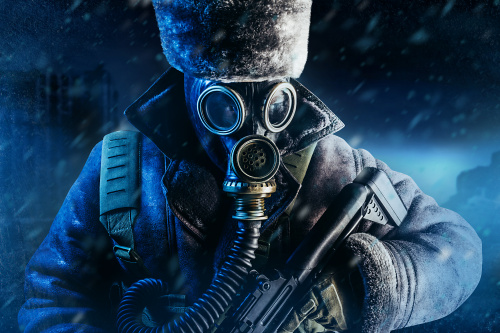
The theory is that Dyatlov group stumbled upon a military testing area and were either killed by Soviet soldiers protecting the area or were scared into fleeing by the sounds of nearby explosions.
One possible scenario is that of power struggle and illegal use of military equipment, helicopters in particular, by high ranking officers. This theory was put forward in September 2011 by Alexander Gulikov. During the time of the incident the 21st Communist Party Congress was taking place in Moscow, and the enhanced service mode was enforced by the Interior, the Navy, the KGB, etc. respective ministries. It was strictly prohibited for any military equipment to leave its location, any personnel training connected with the taking out of military hardware is cancelled, soldiers cannot go on leave, neither can officers go on leave, and commanders are on round-the-clock duty. In this environment military officers who were friendly with at least one of the top Moscow bosses had gone hunting in the valley of the Auspiya river. A group of Mansi beaters would act together to flush out wildlife and game towards the line of approaching hunters. The return from the hunt was planned for 1 February 1959. For their return they used a military helicopter. Gulikov speculates that the KGB were fully aware of what was happening and the plan was put into action under instructions from certain party bosses in Moscow in order to discredit another party boss. The hunt was filmed with a dated film. The camera was sealed. Clothes marked with radio isotopes were to help with detecting the location of the camera.
The operator had to leave the sealed camera wrapped in the radioactive clothes near the Dyatlov cache site. The appointed operator was Semyon Zolotaryov. In Gulikov’s opinion, this was not a man called Zolotaryov at all. We have to point out that the camera found around Zolotaryov's neck was nto the same camera that he was showing off the the days before the accident. The reason for elimination of the whole group is that Zolotaryov was spotted taking the photos. The operation began with ensuring that the Dyatlov group appeared in the taiga by a certain date when the helicopter would be there. In Gulikov’s opinion, information about the date of the helicopter flight was brought to the 2nd Northern by a Mansi hunter. The group had started making good progress but after Yudin had left to return and the group had left the 2nd Northern, further movement was surprisingly slow. Zina Kolmogorova wrote in her diary for 30 January about ‘slowly getting up’ in the morning. The group resumed their journey only at about 10 am or even later. Trails were everywhere in the area as the Mansi were preparing the hunt for the military officers. On 31 January the Dyatlov group left the ski track and moved up to the edge of the forest, moving away from the Auspiya and wading through virgin snow, then they returned back to the river valley. This maneuver was evidently going around something. The ‘something’ was the military officers. The supposition is that Zolotaryov was seen taking photographs as the helicopter was in the air. As the helicopter returned to Ivdel, Zolotaryov (and maybe one more person – possibly Dyatlov) quickly returned back to the group.
The group then packed everything and in great haste moved to another, less convenient place, making a camp at the foot of Kholat Syakhl in the hope they would not be found. Zolotaryov did not hide the camera with the isotope-marked clothes, his task was to leave those things near the cache site.
On their return, the officers realized that photos have been taken of their illegal use of the helicopter. They send trusted men back in the helicopter to find the group and do whatever it took to bring the cameras back. These men found the hikers’ camp on the mountain slope on 1 February, at some distance from the place where the group had been noticed earlier. The helicopter landed either at the Lozva river from where they went to the tent following the ski trail, or nearer, on the slope. Even though the instructions were to do without bloodshed, they probably met with resistance by the group, who did not understand what was happening, except for Zolotaryov and probably Dyatlov. The military men were well versed in unarmed combat and knew how to kill without leaving external marks. The military men could not have known that the operation involving the taking of photographs was under the control of the KGB. Zolotaryov would have felt assured of the strength of the organization behind him and did not want to give them the camera. Events probably got out of hand very quickly and when the military men saw that they had overdone things, their decision was to leave no one alive. Gulikov estimates that at about 6-7 am the next day (2 February), these men returned and, using their broad skis, they cleared up leaving no tracks in the soft snow. They found the dead bodies, but not all in one place. It was then that they searched out the bodies of Dyatlov and the other two, Krivonischenko and Doroshenko, under the cedar. They found Dubinina and Zolotaryov still alive and killed them by pressing on the carotid artery with the use of puttees, then threw them down the snow den. One of these puttees was later found near the cedar and another one in the gulley. The military officers and their men, along with the helicopter crew, felt they were in deep trouble. The issue of the illegal use of the helicopter was now about to be disclosed. On top of this, all the members of the Dyatlov group were dead. It was therefore in the interests of everybody concerned, the various services and ministries, to hush up the whole story. The situation with regard to the power struggle in Moscow was shifted to the back burner. The party leaders did not want the story to become known to the general public and, worst of all, to be leaked to the foreign press. The top military leaders wanted to find the camera but they didn’t know where it was. The KGB wanted to find the camera, but without the interference of the military. Gulikov felt that Lev Ivanov knew how the Dyatlov group had been eliminated and who had killed them. However, he was given a categorical order to close the case. He wrote a considered and bland conclusion. Tempalov’s Mansi version was discarded. The criminal version was completely excluded.
Hikers mistaken for Gulag fugitives
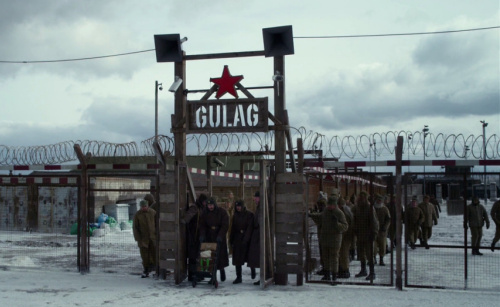
One private investigator, who spoke to former servicemen in the area, said the hikers could have been killed after being mistaken for escaped prisoners from local Gulag prison camps. Or alternatively, that they were killed in a ‘clean-up operation’ after a series of military exercises. Siberia at the time of the tragedy was still a land of Gulag. Many political prisoners were released in 1953-56, but criminals were still behind bars. Many small concentration camps were dispersed all over the region. The closest was Ivdellag situated just few miles from a site of a tragedy. Although it is true that there were no escapes around the time of the tragedy it doesn't mean that it never happened before. History knows many examples then prisoners would escape and go into hiding for years and even decades at a time. They could have easily missed death of Stalin in 1953 and subsequent amnesty to all political prisoners. Young hikers could be taken for unwanted witnesses and subsequently killed. If you take in consideration that many of the political prisoners came straight from the fronts of the World War II it is plausible that these people knew how to kill and were open to the idea. Furthermore, Yuri Yudin discovered a piece of clothing that did not belong to any of the members of the group. This "obmotki" is a wide piece of clothing that are wrapped around feet or legs to keep them warm. They have distinct shape and made from a particular material. They were widely used among the soldiers in the 40s and later among the prisoners of Stalin's concentration camps. Nobody knows how it got here and nobody knows how it disappeared from the evidence room. But it did.
Mansi

Vladimir Korotaev and Mansi questioned in the case
Since there were no prison breakouts from the local Ivdelsky corrective labor colony, the next in line suspects for the culprit were the indigenous Mansi people living in Khanty–Mansia, an autonomous district within Tyumen Region in Russia. At the second week of the investigation the prevalent theory was that the evil Mansi hunters who often camped in Mount Kholat Syakhl committed the crime on the night of the February 1. The information we have on the Dyatlov Case can be mostly attributed to the work of St. Petersburg investigator Evgeniy Vladimirovich Buyanov. What made native Mansi people strong candidates to be the perpetrator:
- There was Mansi chum (definition) North-East from where Dyatlov group pitched their tent on the night of January 30th. A trail leading to the chum was passing 200 feet from where Dyatlov group camped. So they had an opportunity. read more »
- Mansi knew the area and definitely had the skills to hide their ski tracks and hunt the hikers into the woods. The MO (method of operation) is so unusual that can be easily attributed to somebody very used to hunt down and kill animals.
- Mansi are proud and secluded people. They consider these mountains their hunting grounds. If the Mansi told them that they should be there, and the hikers took it the wrong way a verbal confrontation could easily escalate into physical.
- Ethnographers knew of Mansi holy places scattered across the Northern Urals - mysterious stones and pagan prayer houses. In general, the mysticism and unknown made Soviet atheist prosecutors suspicious and fueled their desire to blame the crime on the Mansi. Common belief was that nothing not endorsed by the official law enforcement can lead to something good. It doesn't come as a surprise that the first and only coherent hypothesis in the course of the formal investigation is the involvement of Mansi hunters in the hikers' death.
- Rumors were circulating of a woman geologist that was tied and thrown in the lake in the 30s. The motive was desecration of Mansi shrines. We don't know if this is fiction and/or what exactly happened. There are no documents introduced to backup this story.
Inconsistencies:
- Even if the story about the geologist were true there hasn't been a crime committed in the area for 3 decades. Quote from a witness report by Pavel Makhtiyarov (Mansi native): "Everyone goes to this mountain: Russian men and women, Mansi. There is no special prohibition to hike the mountain."
- From the interrogation reports on the religions hypothesis is clear that there are no sacred places in the surroundings of the Kholat Syakhl. This theory was based on misinformation where the ritual objects and places significant for the Mansi are, complete lack of understanding how the Mansi practice their religion, and desire to have a politically correct hypothesis in an atheist society. It would be very convenient to have yet another use case what how religion can affect your mind and what crimes can be done in the name of a false idols and/or causes.
- Hikers property was not stolen after they were chased down the mountain. Life in Siberia is harsh. Mansi could easily make thе tent and footsteps disappear never to be found and loot the stuff that was inside - boots, clothes, food, alcohol, money, pens and notebooks. Some of these things their kids never had. Even if the cameras and flashlights were not of a particular interest because they didn't have where to buy films and batteries, the alcohol they knew very well. The alcohol was actually considered a better currency that money among the tribes. Money found in the tent was 1685 rubles plus 310 rubles on Rustem Slobodin. 2000 rubles were impressive sum not just for the indigenous Mansi. This was the budget for the whole trip. For three weeks Dyatlov group property remained untouched in the ruins of their tent.
However, this contradiction was not of a considerable bother for the investigators, at least not in the first stage of the investigation. The temptation to blame the death of hikers on the local Mansi was too great. Several young Mansi hunters were arrested and interrogated in March 1959. It's hard to say what would have been the fate of these people, because the ability of the Soviet "machine of justice" to produce the necessary evidence is confirmed by the entire history of its existence, but the investigation in the second half of March made a surprising turn.
Death by snowmobile
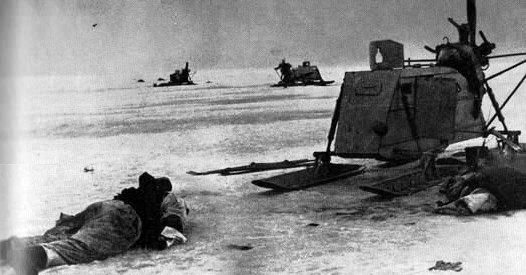
It is not very often you come across a novel way to kill the Dyatlov group. Usually the theories give reason for the group to leave the tent, but then they kind of let nature take its course. Igor Povetkin ventures to point out what could inflict the hardest to explain and quickest to die from injuries. In this version Dubinina and Zolotaryov are run over by a snowmobile. Thibeaux-Brignolle head injury, the wound on Kolevatov's head, and the abrasion on Kolmogorova's side and lower back could also have been caused by a snowmobile. The author assures us that on February 1, 1959, nothing fell from the sky to height 1079, no flying saucers, no rocket engines, no comets with meteors. All the evil was done here below, on earth.
Altercation on the pass
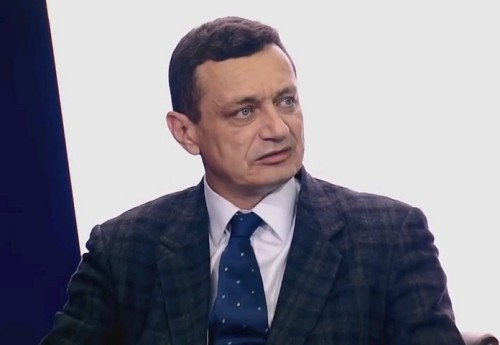
Eduard Tumanov
Well known pathologist involved with Dyatlov case, Eduard Tumanov, is pushing a theory that hikers took part in a fight, either between them or with outsiders. He is not partial to any of the two versions. His observations are purely based on the autopsy reports and mainly what is missing from them. Judging from the official autopsy records, Dyatlov group members have injuries sustained perhaps a day or two before the onset of death. We are talking abrasions and bruises, common for injuries from blunt objects: a fist, a branch, any solid blunt object. On the face and hands there are abrasions covered with a crust, bruises turning green. This indicates that the duration of the injury is greater than those minutes, hours that could have occurred before their deaths. And they could be sustained in a fight, or in some other events. Most likely, the group came into conflict with someone in the area of the pass.
Here is a closer look at the injuries on Krivonischenko, who was found together with Doroshenko near an extinct fire under cedar. The lower left half of the pants is missing to the level of the knee joint. The edges of the underpants fabric at the edges are uneven with the charring of the fabric. It turns out that the lower left half of the pants burned on the leg. Why and how could this happen?
Further multiple abrasions on the body. The site of sedimentation in the center of the frontal region. In the left temporal region there are two abrasions of red-brown color. The area from the right temple to the nape has an internal hemorrhage. And this suggests a strong blow or blows to the temporal and rear region of the head. But for some reason, the expert does not describe external damage to the right temporal region. And this is amazing. There should be a visible bruise.
Perhaps a few punches with a fist, or a hard blunt object. And here is another very interesting detail. The rear of the right hand in Krivonischenko, as the expert wrote, is swollen. In the area of the metacarpophalangeal joints (knuckles), the soft tissues are whitish-gray in color, the fingers are brown-violet. On the back of these fingers minor skin abrasions. This picture is likely to indicate a fight. Krivonischenko was beaten on the head and he hit his right fist. We read further: on the middle phalanx of the third finger, the defect of the epidermis, in shape and size coincides with that found in the oral cavity. It turns out that Krivonischenko bit off a piece of skin from his finger. Krivonischenko could have been beaten and tortured. Probably, he couldn't stand the pain so he bit off his skin. And here's another mystery. On the middle phalanx of the fourth, fifth fingers skin wound, tight to the touch. With charring. Again, it is not clear what kind of skin wound? An expert describes a burn? But if he described the burn, he would have to write what form he was and there are many more details. And here it is just like a wound, and with charring.
Tumanov's opinion is that all bodies should be exhumed and subjected to a new full autopsy for missed or omitted on purpose details. xHe is pointing at the following discrepancies and violations when the bodies were first protocoled:
- When first the bodies were found there should be a forensic expert present to observe the position and overall condition of the bodies the way they were discovered. The presence and localization of deformities and the condition of the skin as a whole are not described, visible lesions on the body are described only partially. The clothes and the position of the corpses are described very superficially.
- No forensic survey of the scene of the incident was carried out, photos were uninformative, closer in execution to artistic shooting than to criminalistic.
- The conclusions in the first five autopsy reports were copy/pasted:
"... the death of Doroshenko (or Krivonischenko, Kolmogorova, Dyatlov, Slobodin) was caused by low temperature, as evidenced by swelling of the meninges, a sharp replenishment of the internal organs, overflow of dark blood of the heart cavities, the presence of Wischnewsky spots on the gastric mucosa, frostbite fingers of limbs... ". - In each of the nine acts, the expert indicates that pieces of internal organs were taken for histological examination, but only the last four have results in the criminal case - N.V. Thibeaux-Brignolle , A.S. Kolevatov , A.A. Zolotaryov and L.A. Dubinina. It can be assumed that the histology of the first five bodies was deliberately concealed, as it was clearly more informative than that of the bodies found two months later.
- In each of the nine autopsy reports, Vozrozhdenniy writes that pieces of internal organs were taken for a forensic chemical study. But in the materials of the case there is not a single result of the forensic chemical test that should at least show the presence or absence of alcohol. There is more information in this fact - for alcohol presence are collected blood and urine. Vozrozhdenniy indicates that parts of the internal organs were taken for the forensic chemical examination. This means that he sent the samples for a forensic chemical testing not only for alcohol, but also for the presence of poisons. 6. And finally, the location of livor mortis spots does not coincide with the position of some corpses at the time of their discovery. Rustem Slobodin and Yuri Doroshenko were found face down, and the expert described the livor mortis spots on the back of their bodies. Zinaida Kolmogorova has the same description, which, as stated in the examination certificate, was found lying on her side. There is controversy on this point.
UFO
This photo is often referred as №33 depending if you count frame №15 which was discarded till recently (or at least until Zolotaryov's film suddenly start showing so much potential) as poor quality.
Occasionally some of the conspiracy theorists claim that UFO scared the group away. Although seemingly incredible this claim might have some base to it. About the same time Soviet armed forces did launch several rockets from Baikonur base. Although military claimed the rockets landed in the north Ural mountains, several geologists 70 km from the mountains saw some glowing and pulsating orbits flying in the direction of the Kholat Syakhl on a day of tragedy (evening of February 1st).
Lev Ivanov, a man who was in charge of the investigation at the Dyatlov Pass, lived a long life. In the early 1990s in an interview to a local journalist he made a statement that during his investigation he and E.P. Maslenikov both noticed that the pines in the forest were burned at the top. He also claims that A.P. Kirilenko, member of the Soviet Congress, along with his advisor A.F. Ashtokin forced Ivanov to take out any reference to the unknown flying objects or other strange phenomena. This included pictures of flying spheres drawn by the Mansi hunters and other testimonies. It is true that Soviet Union experienced a boom of interest on everything unknown. Skeptics might also add that Ivanov gave this interview to make some money. However, we have to mention that Kirilenko became obsessed UFOs. Starting in the early 60s he filed several requests to gain access to the KGB archives. We don't know what was found in the documents, but it is undeniably strange that a political figure in USSR paid such interest in this subject. UFOs were not investigated by the official science as it was deemed a pseudo-scientific or religious phenomenon. Atheist Soviet Union obviously prohibited any interest in the subject, especially among members of the highest legislative body in the country.
Surprisingly, one of the most extraordinary and astonishing versions came from none other than Lev Ivanov himself. In 1990, the retired Prosecutor published an article, "The Enigma of the Fireballs", where he admitted that in spring of 1959, under the pressure of A.P. Kirilenko, and of his deputy, A.F. Yeshtokin, he withdrew various key materials from the case that indicated the true cause of the accident: "fireballs" or a UFO*.
"When E.P. Maslennikov and I examined the scene in May, we found that some young pine trees at the edge of the forest had burn marks, but those marks did not have a concentric form or some other pattern. There was no epicenter. This once again confirmed that heated beams of a strong, but completely unknown, at least to us, energy, were directing their firepower toward specific objects (in this case, people), acting selectively."
It is worth noting that later on, Kirilenko professed a lively interest in the UFOs, and received memos about sightings of unidentified objects from the Chairman of the KGB, Andropov.
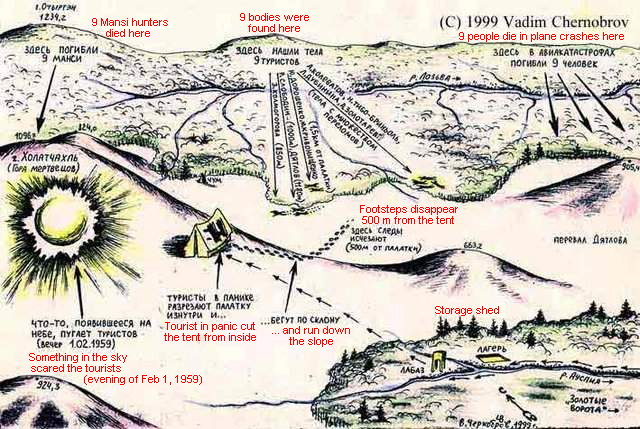
Unfortunately these were not the last victims of the Kholat Syakhl. From 1960-61 several airplane crashes took away lives of nine pilots and geologists who were sent here. For a time flights were totally canceled in the region. Among more recent victims of the mountain was a crash of Mi-8 in 2009. Pilots ignored long standing unofficial no- fly zone. Fortunately they survived the cash, but they couldn't explain why their helicopter went down so quickly and without any warning. Hikers today repeat the track of the Dyatlov group, but none of groups ever contain 9 people. In the early 2000's a group of 9 hikers under supervision of rescue crew repeated the same descent down the slope of Kholat Syakhl. Despite snow cover and night time none of the participants got any significant bruises or cuts. Those who observed the students did not report any difficulty in locating members on the mountain side. None of the group members were lost and vocal/ eye contact was constant between group members at all times. This only adds to the mystery of what really happened on Kholat Syakhl that day. The case of Dyatlov Pass deaths remains open.
Strange lights
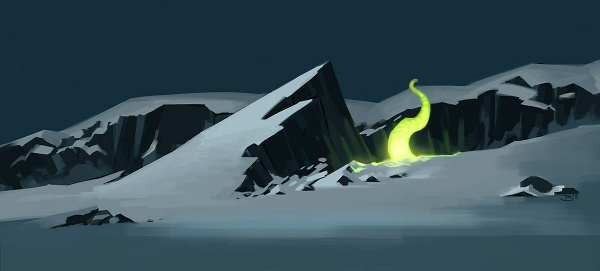
The idea is that some sort of extraterrestrial thing with blinding lights and creatures with floating orbs that respond only to a human glance could have caused the panic that occurred on that fateful night. Author of the theory, Yury Yakimov, describes his personal encounter with them:
"On 11 September 2002 I was working as a night-shift foreman at the Ivdel unit of the Bauxite mine... It was 11 pm and dark and I was walking down the road leading to №15 pit. I was already near the transformer from which I could turn on the floodlights to illuminate the pit, when approximately 200m away from me I saw a strange shaking white light moving up and down the side of a rock dump. It was as if someone was sitting in a car with halogen headlights and was moving it around wildly. The light bounced up and down the side of the dump. The distance from the source of the light to the side of the dump that it was illuminating was about 100m. There was not a single sound, only leaves rustling in a slight breeze, and a little drizzling rain started falling.
Suddenly a beam of light from the unknown source started turning in my direction and shone on me across the forest. I rushed off the road and ran to the transformer (it stood at the roadside), opened the transformer box door and turned on the lighting in the pit. Lamps then illuminated the southern part of the pit, but the broad beam of light from the unknown source continued shining on me. It flooded the whole of the forest around me with a bright white light. The light itself was as bright as day and it seemed as if the trees had no shadows. I stood behind the electrical box, near the transformer, with my face turned away. There were two or three minutes of agonizing suspense, then the broad beam of bright white light slowly moved away from me. Everything was still quiet.
I looked again in the direction of the source of the strange light and saw how the beam of light from the source again started moving towards me. I noticed a couple of flashlights had separated from the source and were moving in my direction. At first there were two of them and they seemed to be swinging. They moved fairly quickly across the forest towards me. I turned away then looked up again. Now there were four or five of them, maybe more. They struggled through the forest as if enveloping tree trunks. It was as if several people with strong torches were moving through the thick forest trying to spot me. Unintentionally, I looked away again and froze. Immediately the torches left me alone. There was something very strange going on.
These were certainly not thieves. It was something different, very strange and unusual. I realized that I had witnessed an amazing and unusual phenomenon. Clearly, this source of light seemed to react to my glance, it dazzled me with its light and sent the swinging torches in my direction. When I turned or looked away to where the source of light could not be seen, the torches did not react to me. Nor did they react to the lamps (two of them) that illuminated the southern part of the pit.
I went down the temporary exit road in the western part of the pit and examined the shovel and the feeder cable. Everything was intact. There were no tracks of a vehicle either in the pit or on the road near the pit. The road was wet after the rain and any track would have been visible. There were no other roads leading to this pit.
While down in the pit I kept thinking of the unusual dancing lights. What were they? Where did they come from? Why did they react to my glance? As I was leaving the pit I again saw the continuing dancing of light on the side of the rock dump. I looked to the right, in the direction of its source, and again a beam of light immediately came in my direction. The same thing was happening again. There was no doubt. The source of light appeared to react to a human glance.
It was something I could not explain. I felt weird from the strangeness of what I had seen and I felt anxious and uneasy. To put on a show of bravado, I shouted as loud as I could, ‘Hey! Hello! What’s up?’ Then I whistled and cursed. But the inexplicable light phenomenon did not react either to my curses, or to the whistling.
And then, from far away, the wind brought the roar of an approaching heavy loaded truck. There was no reaction from the source of unusual light to this sound.
I looked again at the light dancing on the side of the dump. Once again, a beam of light from the source came in my direction. I did not want to tempt fate any longer and left the place. I walked to the fork of the main road and soon the truck with a load of ore appeared. I climbed into the cabin and told the driver what I had just seen. I felt he was wary of what I was saying, but I didn’t try to convince him or prove anything. I felt extremely tired, sluggish and jaded. Probably it was because I couldn’t get rid of the feeling of anxiety and danger that I felt as a result of the strange light."
Teleportation experiment
An apocryphal 2013 horror film, Devil's Pass, ran roughshod over the facts and suggested a ghoulish teleportation experiment – and its elite guards – had put an end to the Dyatlov hikers. Although the movie is more or less hated throughout the Dyatlov community some frames fabricated for the movie had become so popular that people mistake them to be real. The frames in question »
Fallen tree
Does a tree falling in an empty forest make a sound?
This is what the group’s final day alive looks like, according to the evidence found.
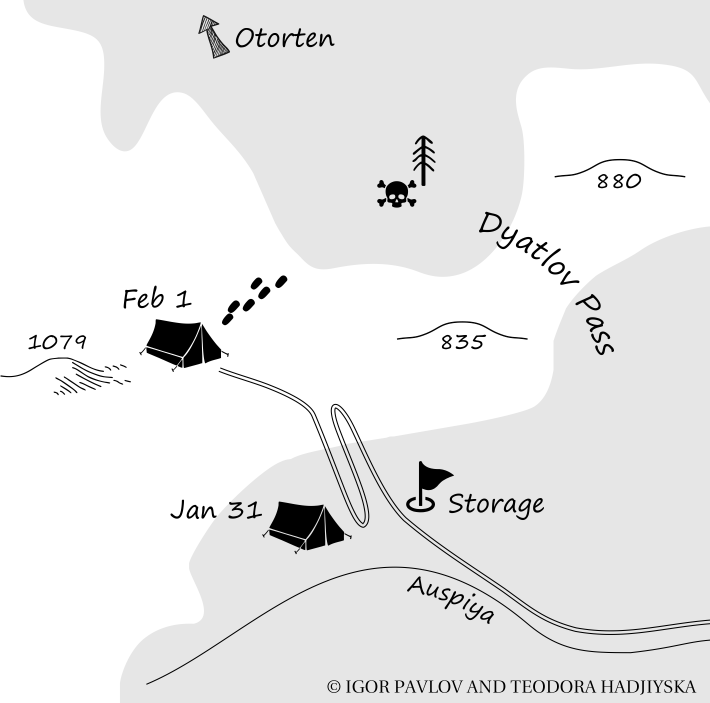
Their plan – and common sense – dictates to pitch the tent in the forest.

There was no bad weather, the group was well rested, and the total distance to travel that day was only two miles, with lighter backpacks. There was a new, more experienced member of the group, Zolotaryov, who had joined the trek because it was shorter and easier than the one he had enrolled for previously. He wanted to go back home. Even if Dyatlov could have convinced the rest of the group to make a challenging overnight on the ridge for no apparent reason, he wouldn’t have passed this through Zolotaryov, who was old enough to be his father. All members of the UPI sports club who had been with Dyatlov previous on winter treks testify that they always tried to pitch the tent between trees, where there was firewood and no less wind. This is a photo from the morning of February 1st.
See photos from another year of that same tent and stove the Dyatlov group was using on the fateful trek: Photos of the tent.
They had a short trek that day. The place for the overnight was good, with convenient access to water, and the Mansi had used it before to camp there, too. Grigoriev, while searching for the last four bodies, dug up an animal hide from under 5 feet of snow: Grigoriev notebook 3.
The area around the famous cedar is described as showing signs of activity from many people. Some theories say the hikers, presumably in the dead of night, exhausted and barely clad, behaved as if they’d been blinded. There were a lot of broken branches, away from the cedar. Theories say there was a strong wind that blew the branches away and the hikers couldn’t find them. This to me sounds like trying to maneuver the facts into some twisted logic. Facts are that the most common behavior for the hikers would be to pitch the tent, gather firewood, go to the river for water, make a camp fire, install the stove, change from daily clothes into something they will spend the night in, take off their boots… What could have happened then to cause all the injuries? Some of them mortally injured and dying within 20 minutes from the trauma, according to the medical examiner, others running around till the hypothermia set in?
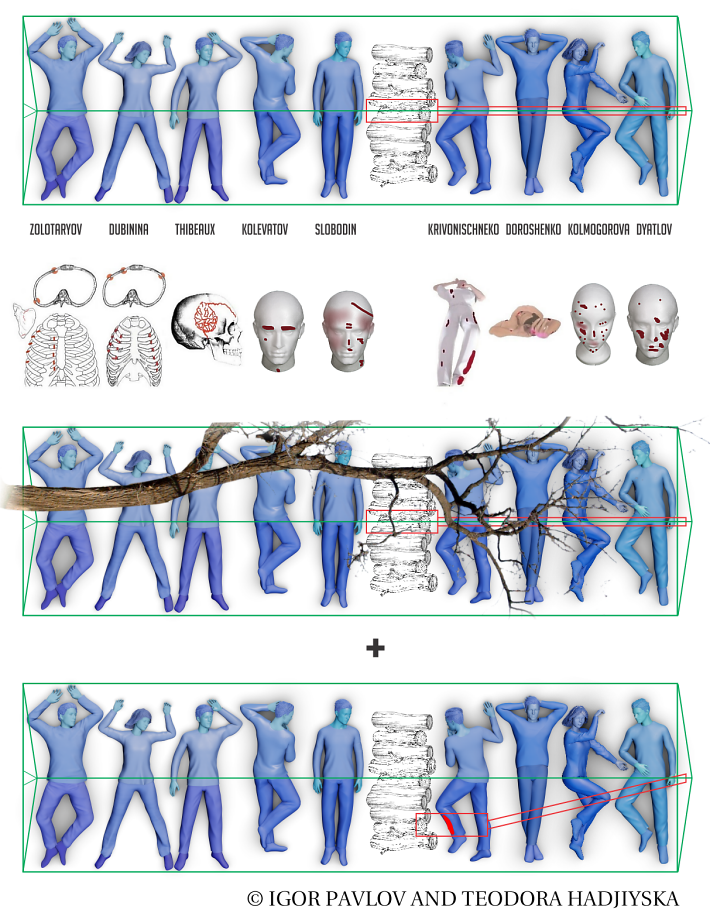
I have collected data from incidents with trees fallen on top of tents. Winds and snowfall are top on the list of factors. There are many fallen trees in the area of the incident. One much overlooked fact is how little snow there was on top of the bodies found in February and May. Two of them were barely dusted with snow according to the protocol of discovery and the photos. This is impossible if they had been lying there for a month.
I have uploaded some pictures so they don’t overload the document. They will not go in the book.
Incidents with fallen trees
I started showing up at incidents sites with fallen trees on top of tents and befriending the medical examiners – they invited me to attend the autopsies. In the incident below, the woman dies without s single broken bone from mechanical asphyxiation. Somehow the tree propped itself but didn’t leave her enough space to breathe. There was gray foam coming out of her mouth. This is what Doroshenko had too. The conspiracy theorists say that may be because the CIA used to sit on the chest of a person during interrogations. Another wild interpretation is that Zina’s hair was messy because, the conspiracy says, whoever was after them roughed her up. This would be torture for a beauty like Zina, messing with her hair, as frightening as tearing the tongue out of Lyuda’s mouth. Things are not balanced in this case. Incidents with fallen trees are like the Rapture - one is gone, the one lying next continues living. This is one disaster that can affect people clustered together very differently.
During the autopsy I mentioned that I have 6 broken ribs and flail chest, like Dubinina, to instigate a comment on how they can tell old from new injuries. The medical examiner looked at me with dreamy eyes and said: “Your autopsy would be very interesting.” I got myself into an automobile accident hours later and the nearest morgue was the one I just had left. On the photo I am with the white Peugeot. The father of the woman driving the red car had died days before. She flew from Paris for his funeral. This is what he left her, the red car. It has been sitting in the garage for 10 years. She never thought of checking the tires, they were smooth as glass, it was raining; on braking she lost control and started spinning. I had all the time in the world thinking how interesting my autopsy will be.
In the photos the deceased in the orange pants was a poacher. He was not alone, one can tell from his position. He was pulled and then abandoned. Very much like Doroshenko and Krivonischenko. I have the opinions of two medical examiners, both heads of major city hospitals with regional morgues. They both say that the injuries of the Dyatlov group could have been caused by a fallen tree. This proves nothing since they were not found under a fallen tree, but even if they had been, this would have just added to the autopsy report that the injuries do not contradict the scene of the incident. This would still not be definitive. Medical examiners are very careful about what they say. The terminology usually is “it doesn’t contradict” or “cannot be excluded”.
So, if they died by a tree, why were they not found under a tree?
“Those who know don’t talk. Those who talk don’t know.” - Lao Tzu
The problem with the theories in circulation is that the evolution chain of population goes from Yeti, Mansi, Gulag prisoners, straight to Komsomol, Moscow, CIA, KGB and next stop are the X-files. I am not exaggerating. The lead investigator Lev Ivanov wrote in an article "On the scene of the incident we found that some young trees on the forest tree line have traces of burning, but they are not in concentric shape or any other system. There was no epicenter. This once again confirmed a source of heat ray or completely unknown to us energy acting selectively - the snow was not melted, the trees were not damaged. It seemed like when the hikers walked on their feet more than five hundred meters down from the mountain, someone dealt with some of them as direct targets..." (Read the article →) If this is what the lead investigator believed I would have closed the case too.
Lets we get back to reality, history and geology. We have to account for where and when the incident took place. The Ural Mountains are part of a highly developed industrial complex closely tied to the mineral-rich Siberian region and are the home of peoples with roots reaching deep into history. Beside the logging and forestry, there are many mining shafts and explorations.
These maps show the magnetic anomaly lines along which the helicopters were flying in 1959: Aeromagnetic survey maps.
The 21st Congress of the Communist Party of the Soviet Union was held from January 27 to February 5, 1959. It was a mid-term congress, timed so that Khrushchev could try to consolidate his power over rivals after the attempted coup of the Anti-Party Group in 1957. We know that the Dyatlov group dedicated their trek to the congress. The fact is even mentioned in their “Evening Otorten №1”. Similar tributes were very popular at the time. The Northern Geological Expedition wants to find ore and mineral deposits to glorify the Communist Party.
The most valuable resource was uranium. In case of checking a gamma anomaly, given the limited capabilities, the works might be done with a method borrowed from the practice of the leasing system of excavation of the radioactive ore by the MVD of the USSR in 1945-48, “The works were conducted in the most primitive way – by manual short-hole drilling. Next, blasting out, collecting and sifting the chlopinite – a pitch-black uranium containing mineral. Antimagnetic anti-tank mines weighing up to 5 kg were used as explosives.” Hamza Fazylovich Syunikaev participated in the search. In 1959 he was a cadet of the division team in military unit 6602 (Ivdel). He remembers the cannonade of explosions that were so loud they had to send a request to Moscow to stop the blasting so they could work. The distance in his approximation was not more than 10 km from the search base camp, and the blasts were on the northern side of the ridge, on the side of the cedar tree. The searchers couldn’t stand it even though a mountain separated them from the explosions. The distance between Otorten and Dyatlov Pass is 13 km. The blasting was somewhere in between. The Syunikaev division was dropped on the pass at the end of February.
In 1959 Georgiy Vasilyevich Novokreshtyonov was a judge in Ivdel. He remembers Tempalov, the Prosecutor of Dyatlov case, talking about craters in the ground in the area of the incident.
Many aircraft were flying the skies above. In 1958 instead of retracing a map, a pilot offered Igor Dyatlov to fly him over the area to look around (1958 Subpolar Ural). In a rescue operation of another accident the military helicopters were flying along a planned route and they were used to exchange information with short wave radio station (Chivruay incident).
At the beginning of February, during a routine flight to the geologist camp, the tent was spotted in the area of the cedar with a tree fallen on top. The normal procedure is to take the bodies to the nearest morgue in Ivdel.
Doctor Prudkov and nurse Solter were called to draw up the documents necessary for the burial of the dead hikers. In similar cases in 1946–47, the coroner and the head doctor of the local hospital were invited to Dombay, after which a “Burial Act” was drawn up with a description of the injuries. There are known cases of this type when no autopsy was performed; the examination was limited to a medical report, and there was no investigation.
"Cases of violent death that clearly resulted from reasons that do not entail any criminal liability, in particular as a result of natural disasters (floods, earthquakes, etc.), do not require the institution of criminal proceedings." (From the Instructions of the Prosecutor General USSR 1956-58.)
Some of the bodies were airlifted and brought to Ivdel morgue. Three of the bodies remained trapped in the tent under the tree. On their next drunken get-together, Sulman, Ivanov, Prodanov and Shestopalov decide that the blasting in the area caused the fall of the tree in violation of safety requirements. A decision was made at the level of Municipality, Northern Geological Expedition and Railway bosses to take over the discovery, transportation and preparation for burial of the bodies. This is a logical explanation why geologists, Ivdellag workers and Railway troops participated in the searches. Their behavior was strange in terms of searching practices. There is an underlying feeling of a cover up.
According to archival data, between January 1957 and February 1958, 435 cases of work-related injuries were recorded in the Ivdellag. Ten of them were fatal, five people were left with serious health problems. Eight people were charged, two were convicted. Ivanov knew this very well, the Head of the Administration of PO Box 240. And the sapper commander, Lieutenant Colonel Shestopalov, knew that under the Criminal Code of that time, "negligent attitude to the service of a person in command of the Workers 'and Peasants' Red Army in the presence of particularly aggravating circumstances entail the highest measure of social protection”. And complicity in war crimes of civilians entails a similar responsibility (Art. 193_1; 193_17 (b) of the Criminal Code of the RSFSR 1926). A Hero of the USSR Colonel of the Railway troops I. M. Shapovalov was convicted of a similar crime (death of subordinates in a fire) and was sentenced to 25 years in prison in 1950. Under the letter of the law, Sulman, Ivanov, Prodanov, and Shestopalov risked their heads. They decided to cover up the cause of death. In the USSR they did not cut deals for the first to sing. If one told the truth he himself would have suffered the same fate.
The Conspirators
Geologists
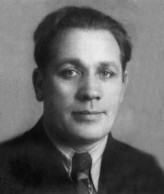
Sulman
Abram Markovich
18.IX.1904 - 17.III.1983
Head of the Northern
Geological Expedition
Ivdellag
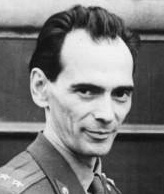
Ivanov
Vitaliy Alekseevich
Lieutenant Colonel, Head of the
PO Box 240 Administration
City Committee
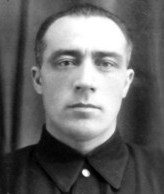
Prodanov
Ivan Stepanovich
1906 - IV.1964
First Secretary of the Ivdel
City Committee of the CPSU
Railway troops
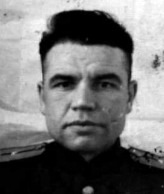
Shestopalov
Mihail Fyodorovich
1916 -
Lieutenant Colonel, sapper
commander leading a group of 7
Sulman is the head of the Northern Exploration Expedition. The reasons for the active participation of geologists in the search are not clear.
Ivanov, Vitaliy Alekseevich. Lieutenant Colonel, Head of the Forestry Administration (PO Box 240) in 1959. He is the immediate supervisor of Cheglakov, the chief of the fire department of the Vizhay branch of PO Box 240. Not a single decision related to his subordinates could be made without Ivanov’s approval.
Prodanov - Secretary of the CPSU City Committee of Ivdel. The top communist in the area. He worked closely with the leaders of city-forming enterprises Ivanov and Sulman. Surely, they made all the important decisions together.
Geologists: Sulman is the Head of the Northern Exploration Expedition. Reasons for the active participation of geologists in the search are not clear. Nevolin (radio operator) took a direct part in the search, the Northern Expedition provided radio communications and negotiated the participation of the Mansi in the search and payment for their participation. All negotiations were conducted through the expedition chief Sulman.
Ivdellag: Cheglakov and guard troops. They were needed to protect prisoners and provide security, and were not enough as it was. Why did Vitaliy Ivanov agree to the participation of his subordinates in the search and the weakening of protection in the camps?
The conspirators needed time to draw up the necessary documents and bury everyone with compliance with all formalities before the arrival of the search group from Sverdlovsk. But they were cut shortly when on February 16 Blinov and Gordo from UPI got through to Hakimov, the Head of the Vizhay branch. In Ivdel, the local leaders realized that in about 3-4 days there would be a massive search for the missing group. The most obvious way out of this situation was to immediately report on the bodies of the hikers who died from natural causes – bad injuries from a fallen tree and hypothermia. But they had recovered only six bodies, three more were still trapped frozen inside the tent under the tree, a tell-tale scene for a criminal offence in their minds. All they had time for was to fly back the six bodies, cut up the tent, get the remaining bodies out, stage the tent for a death by a hurricane, and dump the bodies on the way to the ravine to copy the events from Fedoseev’s book. They already had traces from activity around the cedar and a den. This was perfect for the scenario. The rest had to stage up hastily the re-enactment on the slope of Kholat Syakhl. They didn’t have time to position the two Yuris properly. They were just left with their arms stretched up, the way you drag bodies around.
A lot of different geological work was carried out in the area. The bodies could be delivered to the pass area in boxes under the guise of some kind of equipment. The pilots did not know what they were transporting. And on the pass, boxes could be delivered by Mansi on a sled. In UPI was reported that the Bahtiyarov clan allegedly went out in search. Then it turned out they did not participate in the search. Maslennikov writes about this. The Bahtiyarovs might as well have helped transport bodies without knowing it. Some of them were nowhere to be found for questioning during the investigation.
The Radiogram
There is an interesting radiogram from May:
Received: Temnikov,
Stepanovich Prodanov
this is outrageous, fourteen comrades and I carried the corpses to the helicopter on our shoulders but the crew was ... more than dozen ... the helicopter lifted off, despite my convincing requests, they didn’t take on board what I had requested as a communist ... the crew’s behavior was insulting I ask you to inform the General Party of the Soviet Union and twice the hero of the Soviet Union, commander Col. General Lelyushenko.
for you personally. corpses are frozen in the state in which you saw them in ----- concerns their exposed parts of the body. we are not there ... guided by ... a detailed study showed that they are in a frozen state a medical expert --- refused to perform their resection because of the inability to do this, which he will personally report to you at your request
Ortyukov
The radiogram was addressed to Ivan Stepanovich Prodanov. It was received by Temnikov in the Northern Expedition (Ivdel), and it was definitely read by Sulman.
When could Prodanov or Sulman have seen the frozen corpses? This radiogram was sent after the pilots refused to take the bodies on board for transportation to Ivdel, and after Vozrozhdenniy was summoned. There is no information about Prodanov or Sulman ever going to the pass in May, and Sulman has nothing to do with the search at all.
It is known that after finding the bodies Tempalov, Lev Ivanov and Vozrozhdenniy flew to the pass. There are no recollections or documents about the arrival of Prodanov. An indirect fact in favor of his absence in May in the ravine is that Ortyukov had a heated argument with the pilots. Surely the local party leader would calmly resolve the issue.
The radiogram refers to the bodies found in May in the creek. The only time anybody could have ever seen these bodies frozen is before the official search for the Dyatlov group.
Railway troops: when sappers came to search in March, led by Lt. Col. Shestopalov, they examined this particular stream where the last four bodies were, and, of course, they didn’t find anything. Shestopalov behaved strangely, rendering himself and the rest of the sappers useless to the point that Maslennikov asked for the sappers to be ordered to start probing with avalanche rods. Shestopalov didn’t stick around. He left right after, as if not interested in the outcome of the search.
The Underlings
The only other presence in the area of the pass besides the hikers and the Mansi were the geologists blasting for ore and minerals. The leaders we suspect would have been involved in this operation. But there were also the people who worked there. There was no reason for them to know what’s going on, but the conspirators would need help to execute their plan. They wouldn’t do it with their own hands. Most likely, it was precisely those who participated in the blasting works that took a direct part in the staging. But they were a few. We deduced that two of the people that left their tracks on the slope below the tent were Pashin and Cheglakov, and there were probably two more. This explains their strange behavior. They were supposed to be guiding Boris Slobtsov and Mihail Sharavin, who allegedly discovered Dyatlov’s tent on February 26, but when they approached the location of the tent Pashin said he was tired, and Cheglakov excused himself that he felt sick. Sharavin remembers Cheglakov in particular being confused, idling and totally useless. Pashin and Cheglakov gave contradicting testimonies according to which they found the tent 2 days prior but didn’t tell anybody. It seems they were onto something. They were afraid of the same punishment as their bosses, and they kept to themselves. There must have been no more than eight people altogether that were in on the truth.
The plan was to prepare the bodies to be buried as unidentified hikers who died by their own negligence, in compliance with all formalities. A similar situation occurred in December 1961, when the cook of the detachment was killed in violation of safety requirements during an unloading operation from an airplane based on the ground detachment of geophysicists of the A. A. Latypov group. No investigation was conducted. The body was taken to Ivdel on a reindeer sled. No one was punished.
The tragic fact is that we will never know whether the explosions triggered the fall of the tree. But the Communist Party would look for scapegoats for the death of the hikers. They fired people from the top positions in the UPI sports club, when the deaths were caused presumably by a hurricane. Imagine what would have happened if there were explosions near the fallen tree that killed the hikers. The fear and panic of the local leaders led to such a bizarre outcome of the accident.
The Tent
Another hard to explain fact about the tent – the cuts form the inside. I don’t believe anyone would look for the exit to get out. The conspirators had 3 goals in mind, and they were achieved very successfully:
1 - The tent was taken away from the forest and the tree allegedly fell due to the blasting. The tree can be seen in the search photos but it is covered with snow. You can see it better in Yakimenko’s photos from 1963, when he went with a group of people to place the memorial plaque at Dyatlov Pass boot rock.
2 - The scene was staged for "death by a hurricane". It was very effective. This was the original cause of death adopted by the regional committee. The scenario was based on the book ‘On the Road of Trial’ (‘Тропою испытаний’) by Grigoriy Anisimovich Fedoseev, published in 1958, just months before the tragedy. Fedoseev is a fellow geodesist. The book was literally on their nightstand when all went down.
Excerpt №1 [in Russian]:
We are ducking down in the manure. Vasiliy Nikolaevich pulls out an ax, cuts an icy mound, and he finds in fact sleds. On one of them is a tent, stove, saw, the rest are empty. Probably, the convoy, not reaching the pass by only two hundred meters, was caught by a blizzard. People managed to cut the straps on the reindeer, and they themselves fled to the taiga, for some reason without taking either a tent or a stove with them, without which, it seems, it is absolutely impossible to survive into this kind of cold. What happened to them further, it's scary to even think...
Excerpt №2 [in Russian]:
... A muddy curtain of bad weather appears on the horizon ... We corral into the tent, huddled around the stove, where a faint light flickers a little, casting a pale glow on the gloomy, alert faces of people... from the north a snowstorm approached. And soon everything was whistling around, spinning in a mad whirlwind. Streaks of snowy dust flowed through the frozen slant; snow drifting ominously.
The tent is arched from the pressure of the wind. The stove has gone out. Firewood is over, the cold finds a gap, seeps inside. We are wrapped in warm clothes. It is impossible to fall asleep, but the conversation is not getting better... what will happen if the wind breaks our tent and we find ourselves face to face with a snowstorm on bare rocks, far from the forest?...
A snowdrift piled up heavily on the tent on the windward side, the wall bent dangerously, and soon the rope in the middle broke, unable to withstand the weight... The hanging snowdrift had already taken a third of the site away from us and continued to press from above, bending the crossbar. It was at that moment that a new ferocious squall hit, and the canvas wall broke in half. A mountain of snow fell on us.
“Get dressed and go out!” Lebedev orders. A scuffle begins in the twilight, no one can find their belongings, you hear curses. The wind flaps the torn sides of the tent, throwing fistfuls of snow in our faces.
“I say, get out!” Lebedev's voice is heard through the howl of the storm.
“Presnikov, you are holding everybody back.”
“I lost my hat,” he screams back.
“Cover your head with a bag and get out!” orders Lebedev, wrapping a rope around himself and passing the end to his comrades.
The snowstorm brings down on us all its might. The chill is blinding the eyes, burning the nostrils. Lebedev is ahead, behind him, holding the rope, the others are walking. Moving almost blindly, it is difficult to get to the slope. It becomes easier to walk, because under your feet the descent and snowstorm are somewhat quieter here. We go at random among the small rocks, along hollows with steep slopes. Obviously, we descend down to the ravine, where there must be a forest, which means there will be a fire. We don’t dream about anything else... Only an hour later, the steepness of the descent broke, the placers and the rocks were left behind. Smooth drifted snow under our feet, slippery as ice ... We go down the ravine even lower and notice freshly cut stumps, and then tents are shown. Well done Kirill Rodionovich - how confidently he led us to the camp! And now we are at a great fun bonfire that has given us strength and good spirits. The ropes are untied, there is laughter...
... On the pass we saw snow mounds, like dunes of oblong shape, located in the direction of the wind. And where our tent stood, a frozen mound with an overhanging snow cornice towered ... We did not excavate the mound, it was late, and the snow hardened so much that it could only be cut with axes. We will do it tomorrow...
3 - The tent was specially put out in a prominent place so it could be easily found. Officials from Sverdlovsk left Ivdel faster. Shortly after finding the tent and the first bodies, the locals were appointed to command the searches. All representatives of the regional committee returned to Sverdlovsk.
The footprints going down from the tent are the easiest to explain. The only person who said they were made by feet not wearing shoes was Captain Aleksey Alekseevich Chernyshov. His boss was Vitaliy Alekseevich Ivanov. Even without a direct order, one can easily assume the footprints had been left by the dead hikers who were found not wearing shoes. I am enclosing in the book the opinion of a forensic expert who says the footprints whose photographs we can see in the case files are from feet wearing shoes. Witnesses testify they could recognize 8 tracks. We believe they were left by four people going up and down i.e. 2x4. Also, Captain Chernyshov was the only one to testify there were no traces left by strangers. There is a footprint from a shoe with a heel. We don’t need to ask an expert about this one.
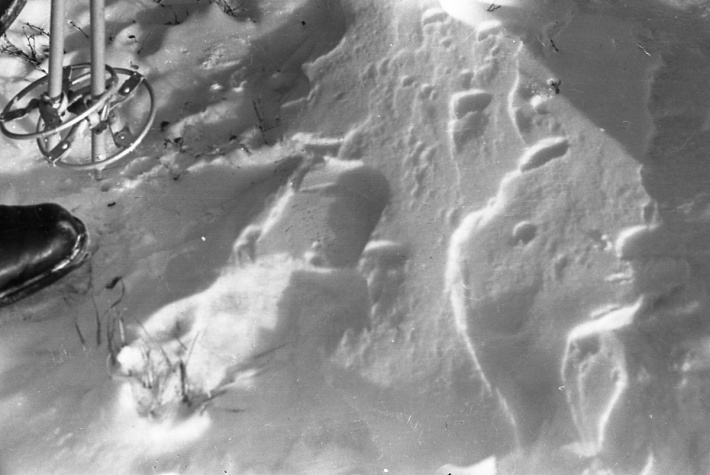
There were traces of men urinating. Such traces cannot remain for 3 weeks, not even slightly powdered by snow. The location where the tent was found is one of the windiest places I have ever been to. It is difficult to stand straight. The air is full of snow even when it is not snowing. The wind blows it from the ground, reshaping everything in its way. You can see the formation on the ridge, the memorial. The wind is in full power at this time of the year. Otorten means ‘The windy mountain’. “Don’t go there” is what locals say when you mention Otorten.
The legend of the 11 bodies
Former nurse in PO Box 240 (Ivdel) Pelageya Ivanovna Solter says she personally treated 11 bodies in Ivdel morgue. How is this possible?
From the interview with Pelageya Ivanovna Solter: “One girl was found with the guys, and the second girl was found 2 or 3 days later.” Solter’s interview was found unreliable and bewildering because she remembers taking off their clothes, the bodies being very dirty, washing them, preparing them for burial, and all this at night. Later the autopsy reports by Vozrozhdenniy start with taking off the clothes and describing the contents of the pockets, the autopsies being performed in daylight.
P. I. Solter says in the early days of February 1959 six bodies were brought to the morgue in the zone; five bodies at first, amongst which there was a woman, and a couple of days later – another body of a woman. Dr. Prudkov is called to draw up the documents necessary for the burial of the dead hikers. This takes place in the morgue of the Ivdellag zone. Our conclusion is these are the bodies of Doroshenko, Krivonischenko, Kolmogorova, Dyatlov, Slobodin, and two days later – Dubinina.
A month later, on March 4, 1959, the bodies of Doroshenko, Krivonischenko, Kolmogorova, and Dyatlov were brought for autopsy. This time there is an ongoing investigation. Coroner Vozrozhdenniy is called from Sverdlovsk to handle the procedure. Four days later, on March 8, the body of Slobodin was brought for autopsy. This takes place in a different morgue. There are two morgues in Ivdel, one for the Ivdellag (aka the zone), and one in the Hospital for the general population. Dr. Prudkov is not called this time. He would have recognized the bodies he had examined a month ago.
The total of these two events equals 11.
The four bodies that were dumped into the creek were officially found on May 5, 1959. This is two months later. They were brought to the morgue in the zone. As far as Ivdel residents were concerned, the search for the Dyatlov group was long over. Most likely, many did not know that someone else had been brought to the morgue in May.
Dr. Prudkov was not invited to see the bodies brought in May either.
In conclusion
The fall of the tree was accidental. Common causes are wind, snow, rotten trunk. The panic among the Ivdel leadership was due to lack of accurate and clear information at the time they made up their minds. Only geologists knew where exactly the incident took place. They found the bodies from the air and arrived at the scene for verification at the request of the police. All the rest - militia, Prodanov (party) and others knew only the “area of Mount Otorten”. For them Otorten, 1079, and the area of the prospecting ground check for the magnetic anomaly are approximately the same place. The difference could be understood by Sulman (head of the Northern Geological Expedition), but It is unlikely that he went into the details (coordinates) when sending employees on a ground check. The said leaders unambiguously connected Tempalov's story about the incident with the hikers with the blasting works in the area.
Imagine this: the sheriff's son goes to shoot rabbits “in the forest behind the house”. After a while, the sheriff finds John Doe body “in the forest behind the house”. Chances are the sheriff's first thought will be "my son accidentally shot someone". And taking in consideration the time (XXI congress of the party) and place (punishment means gulag) the sheriff will decide to move the body and hush up the case.
Dumping bodies is very common psychological behavior even if the person is not culpable for the accident. This is even considered lightening the significance of their actions since "they didn't do anything wrong". Also they didn't move the bodies - they “put them back where they took them from on first place”. They only moved the tent.
In the literature there are many examples of body dump to make sure the dead are not found in the house or company of someone that doesn't want to get involved. From "Unnatural death" by Michael Baden MD:
"It’s much easier to move the body somewhere else and go on with their lives.
… were amateurs, which is why the scene looked like murder. Amateurs always cause confusion. They don't realize the consequences of what they are doing."
This is the only theory that has produced a prediction that was later corroborated.
Five meters from the bodies of Doroshenko and Krivonischenko we found a tree that has fallen in the first month of 1959.
You can discuss this theory in the Dyatlov Pass Forum.
These are only few of the theories. Many are more bizarre, strange and quiet frankly dumb ideas that circulate out there. Some blame the spirits others blame the paradoxical undressing that lead to hypothermia. All these theories ignore the fact that only two bodies showed signs of undressing after they left the tent. And it was the first two bodies found under the cedar. Their clothes were removed after they died. We can assume the bodies were beginning to show first signs of rigor mortis or stiffness after death. The clothes of dead victims were cut off and later found near the bodies in the den. This proves that people were aware of the danger of hypothermia and tried everything they could to save themselves. Why did they leave the tent with all the clothes and boots inside is still a mystery. Many theories surfaced in the past decades. Few of these, however, explain a wide range of physical injuries that the group experienced.

